
SELECTED FILMS
Tickets Are Avaliable For Sale Right Now!
Physical Film Screening Schedule
Feature Films
BULANG MUSIC: FROM THE MOUNTAINS TO THE STARS
by Leonardo D’Amico, Italy
A documentary film by Leonardo D’Amico. Shot by Leonardo D’Amico and Zhang Hai in Xishuangbanna, Yunnan Province, Southwest China in 2017. Bulang Music aims to offer an insight into Bulang musical culture combining a cinematic narrative that includes suggestive music and images with an ethnomusicological perspective. This documentary also explores minority self-representation in media, staged performances and popular music taking as a case study a small ethnic minority living in southwest China: The Bulang people.
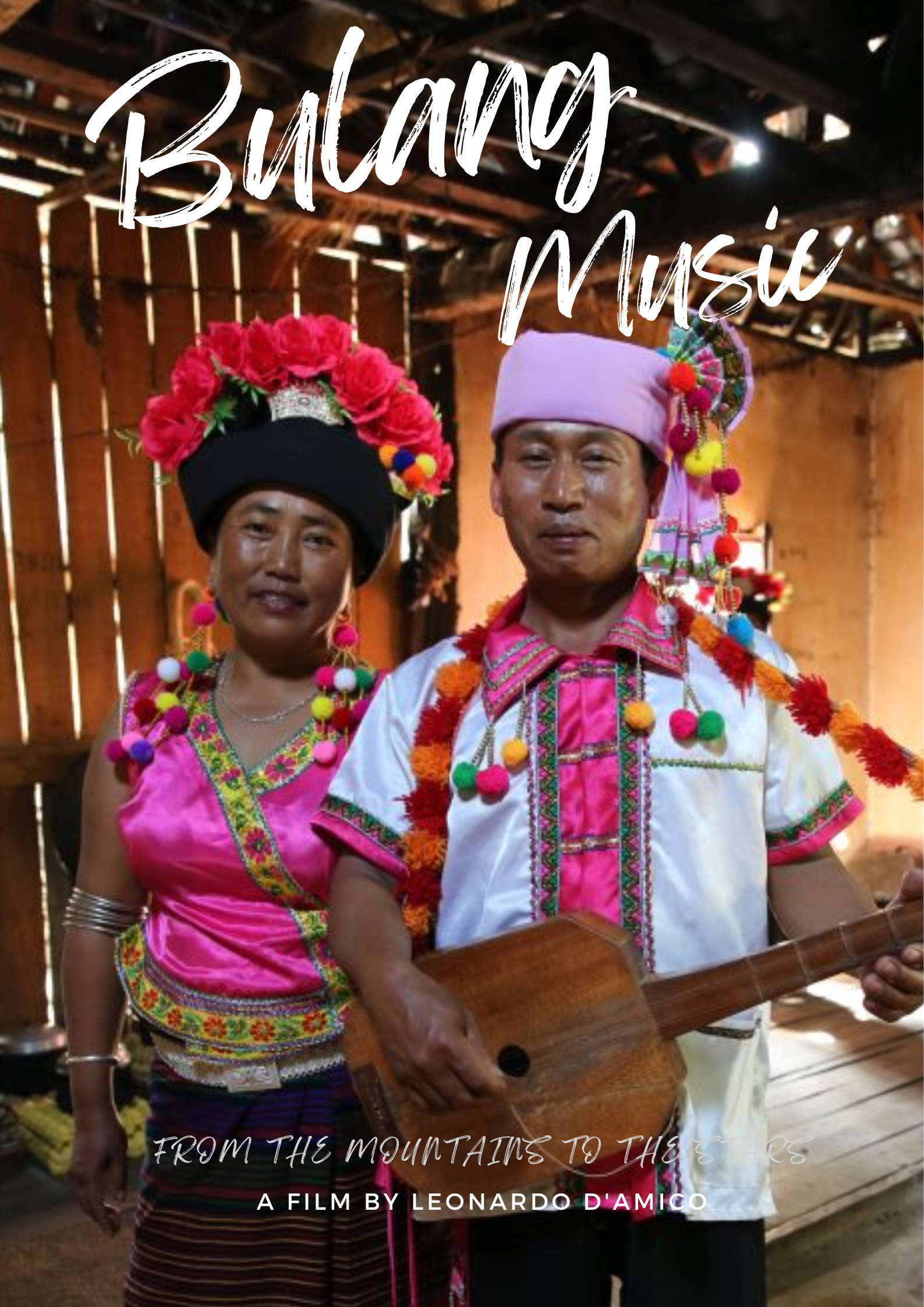
FOREST STORIES
by Ekaterina Piltenko, Olga Ramora, United States
All the collaborations underwent an inevitable transformation at some point in their lives where they realized that thу forest is a full-fledged living organism and it’s crucial to build relationships with it. Forest stories convey the state of interconnectivity and unity of all life on Earth.
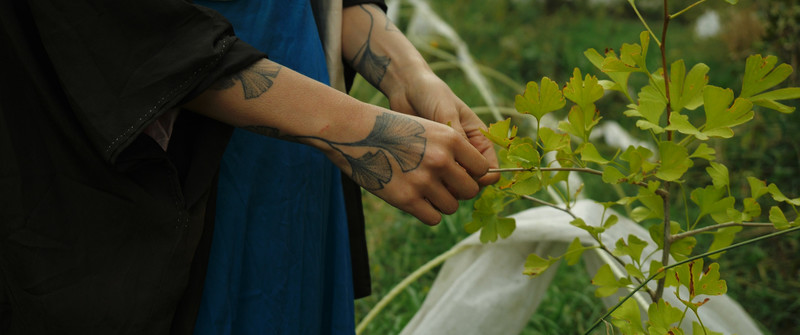
GUARDIANS OF THE SHORE
by Mark Nyambang, Malaysia
The documentary unveils the challenges faced by Sarawak Forestry Corporation’s team and their effort to protect the marine ecosystem through a massive marine conservation project – by deploying artificial reefs along 1,000 km shoreline of Sarawak.
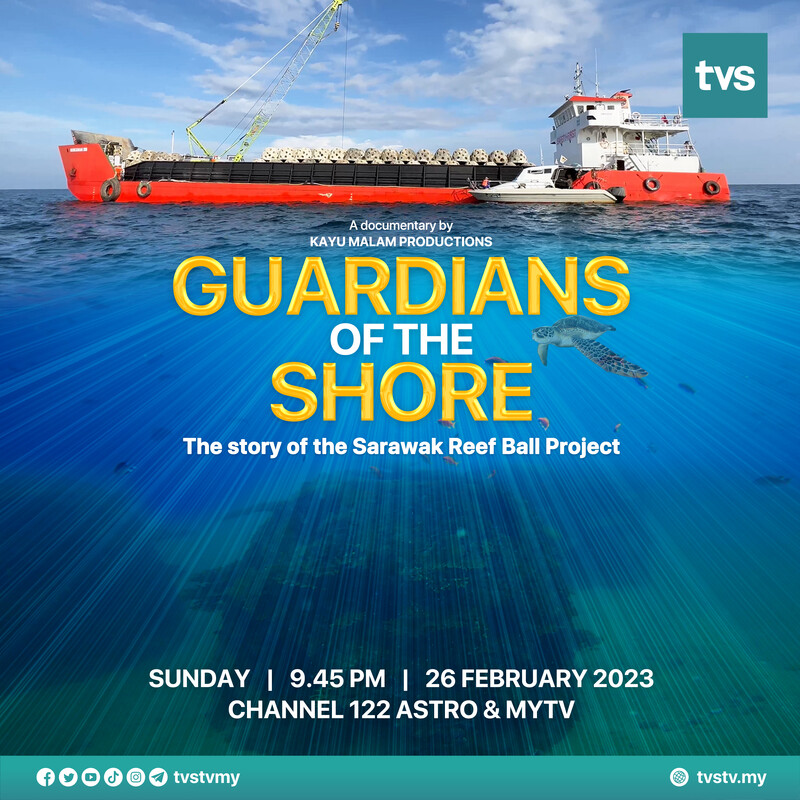
HOUSE OF ADAPTATION
by Onur Can Tepe, Netherlands
The Global Center on Adaptation (GCA) is an NGO working on adapting the world to a changing climate. When looking for a place for their headquarters, the city of Rotterdam proposed to donate them a building that will float with the rising sea levels. The documentary film takes the viewers on a journey through the minds of all the people that gave life to this project: politicians, designers and builders. Why would you build a floating building in the middle of the city and what does it have to do with climate politics? The film contains the answers to these questions, gives a sneak view into the board rooms of GCA and holds a place for the legendary mayor of Rotterdam: Ahmed Aboutaleb.
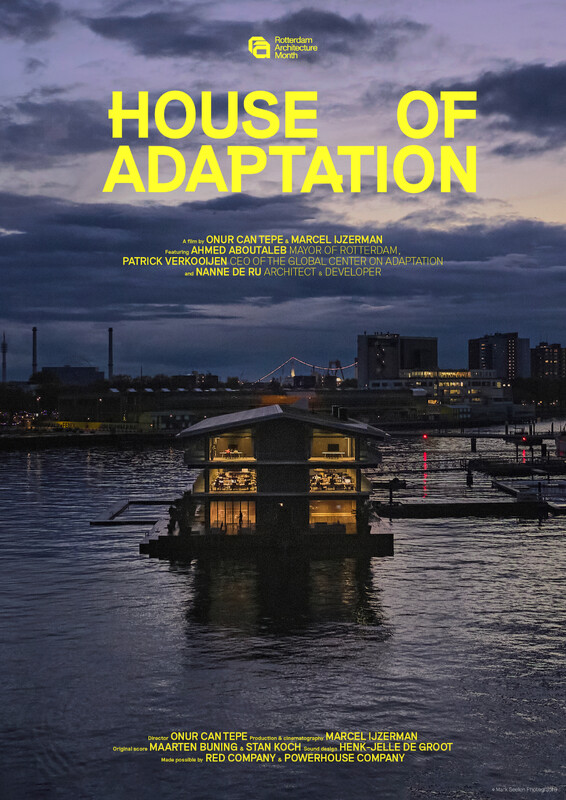
ILLUSION OF ABUNDANCE
by Erika Gonzalez Ramirez, Matthieu Lietaert, Belgium
Despite a deeply unbalanced game, Maxima, Bertha and Carolina share a common goal: they are leading today’s environmental fight against modern corporate conquistadors. Whereas governments and corporations are trapped in a global race to get the cheapest raw materials, these three women tell us a story of tireless courage: how to keep fighting to protect nature when your life is at risk? When police repression, corporate harassment, injuries or even death threats are part of your daily routine? THE ILLUSION OF ABUNDANCE is not only a film about those who pay the high price of ‘development’, it is above all a film about the globalization of their environmental resistance and their conviction to hunt down transnational corporations, wherever they hide.
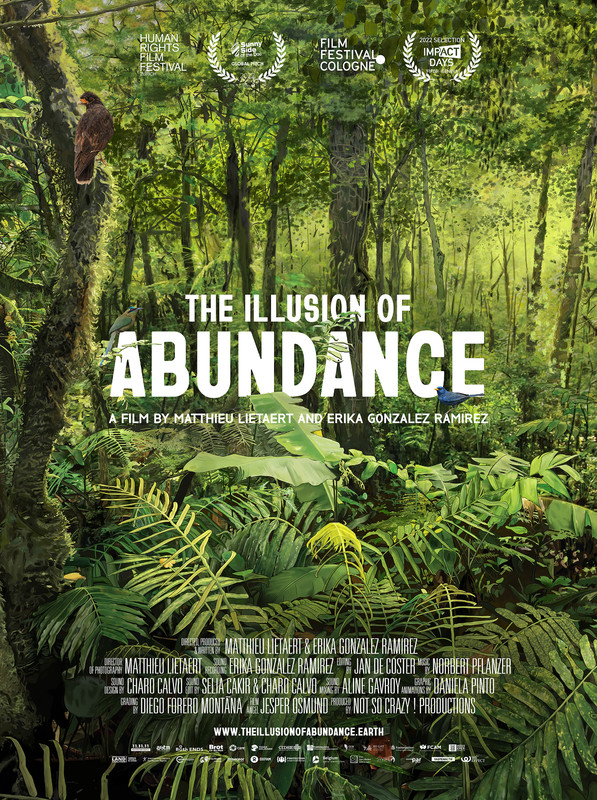
MEKONG APOCALYPSE
by Michael Buckley, Canada
The Mekong River is the most productive in the world in terms of fish catch and supply of nutrient-rich sediment. It is the most important river in Asia. But all that is rapidly changing. This is a satirical personal take on ecosystem collapse along the mighty Mekong, with the biggest threat being Chinese megadams in Yunnan, SW China. Take a wild ride on the Mekong from Source to Sea: ‘Mekong Apocalypse’ explores the devastating downstream impact of China’s megadams in Cambodia’s Lake Tonle Sap and Vietnam’s Mekong Delta. The filmmaker shot this on the run, getting undercover footage of megadams and illegal sand-dredging. Drawing inspiration from water puppetry theatre in Vietnam, this film features characters like a talking glacier in Tibet, waltzing fish in Laos, and a talking sunflower in Vietnam to get complex concepts across. With this slapstick approach, the film does tend to meander–like the Mekong herself. With its sly nod to Coppola’s ‘Apocalypse Now,’ this is a documentary with strong elements of a mockumentary. Background music carries a stark message–as a number of tracks have been specially commissioned for the film. This film is part four of a series of films delving into serious ecosystem problems concerning the Tibetan plateau. BRIEF REVIEWS of MEKONG APOCALYPSE: “The weirdest Mekong film yet! Michael Buckley’s eccentric contextualization of the threats facing the Mekong is an apocalyptic acid-trip.” —Brian Eyler, who has serious reservations about this film. Eyler is author of ‘Last Days of the Mighty Mekong.’ “The tragic decline of one of the world’s great rivers has never been told this way before. Director Michael Buckley has pulled off an artistic coup — by mixing the performing arts of Vietnam’s legendary Water Puppets, cartoons, graphics, video, and poetic spoken-word music — to drive home the message that dams have vandalized and degraded the free-flowing river. Watch his ‘Mekong Apocalypse’ and see why the Mekong is dying!” –Tom Fawthrop, author, Mekong expert, and filmmaker for a series of Mekong documentaries by Eureka Films
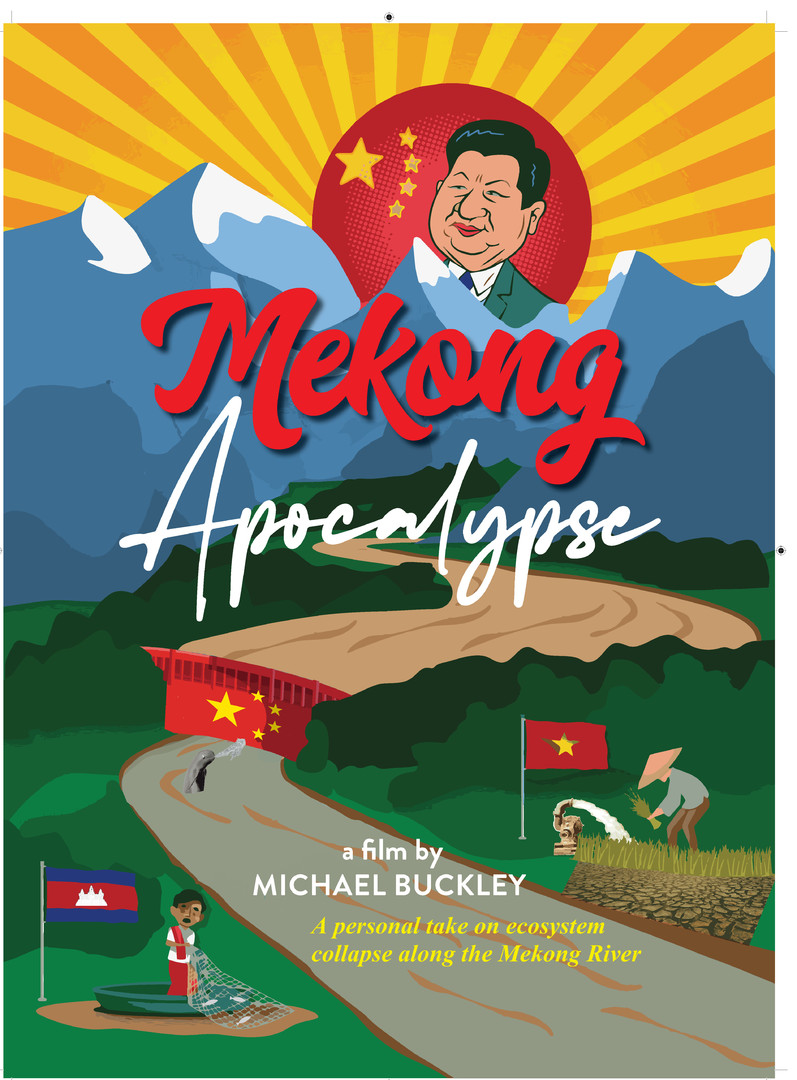
MENTAWAI – SOULS OF THE FOREST
by Joo Peter, Indonesia
75 minutes , 4K , 2023 Language versions available: English, German, Bahasa Indonesia The last indigenous people of Mentawai, a small archipelago south-west of Sumatra, are fighting with creative resistance to preserve their ancient culture and rainforest. A culture on the verge of extinction – with the latest geopolitical developments, the destruction of their habitat reaches the point of no return. Smashing the hopes of thirty years of democratization in Indonesia, Jakarta in relapse to authoritarian rule is enforcing deforestation in Mentawai. In collaboration with investigative journalist Febrianti and indigenous foundations, our film portrays indigenous culture, history and resistance up to the most recent developments in geopolitical of Indonesia’s growing environmental degradation. Connect with all your heart and senses: see, feel, touch, smell life in the jungle. The cinematic and compassionate camera conveys an intimate and sensual experience of the indigenous life on Mentawai with its beauty and vulnerability. Three shamans are the main characters in the film, hunter-gatherers in a culture predating even traditions of weaving or pottery, archaic traditions with their own complexity. The film portrays daily life of the indigenous tribe, their spiritual cosmos and their commitment to preserving their own culture and natural habitat. Logging companies threaten the fragile eco-system of the islands. Rare historic footage and archive materials tell the story of decades of oppression of the indigenous culture – but also of the resilience of our main characters and the last tribes living in the jungle. The main character, Father Laulau had been a leader in this struggle for decades, meeting the governor on Sumatra in a key point of history. The latter part of the film explores the geopolitical context and shows a new generation joining our main characters in the fight for the preservation of both their environment and culture – as part of a larger movement in Indonesia. The project started by indigenous initiative: Martison Siritoitet from Indigenous foundation Suku Mentawai invited director Joo Peter to Mentawai and a long-term collaboration started including also Mentawai Indigenous Education Program The film is one of a planned series of films celebrating the diversity and richness of the Indonesian indigenous culture.
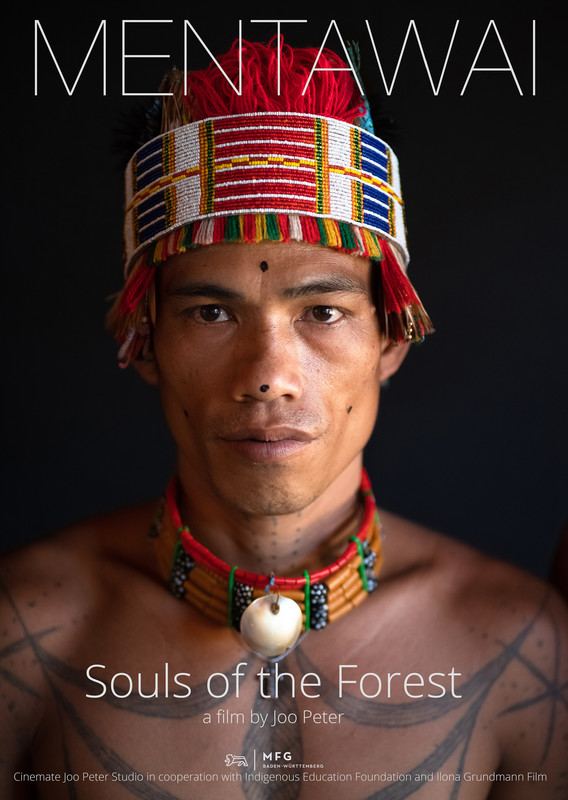
THE BEEHIVE
by Alexander Lasheras, Canada
The Beehive’ is a captivating science-fiction drama that follows the Piers family – a widowed single father, Frank, and his two children, Arron and Rosemary – as they face an unexplainable cosmic event at their family farm. The next day, Rosemary discovers a large bees nest growing on the branch of a big Leaf Maple tree and visits it each day to document its unusual growth. However, when her father and brother discover it, it has grown into a disturbingly large cocoon-like object. Frank attempts to inspect the nest but is stung by a camouflaged stinger, becoming infected with an alien virus. In a desperate attempt to protect his children, Frank barricades himself in the house as they escape the farm. As the virus begins to take over, Arron starts displaying symptoms and eventually dies, leaving Rosemary alone to face the unimaginable. She seeks refuge with her aunt, Zoe Grant, a marine biologist, who helps her escape safely on a scientific research vessel.

THE CLIMATE BATTLE (52 minutes)
by Elena Sender, Alexis Barbier-Bouvet, France
This film is a scientific and geopolitical thriller that follows the battle against climate change over the last 50 years. It is a fight over the future of our planet. The climate battle began 50 years ago. In 1972, the dangers of climate change were raised at the first United Nations Conference on the Human Environment in Stockholm. From then on, a fierce battle has been fought, involving governments, companies, and NGOs. It opposes those fighting to save the planet and those who deny that there is a problem, those who want to act to avoid a global catastrophe and those who want things to stay as they are. This film retraces fifty years of scientific research and media controversy, citizen mobilisation and lobbying, political jousting and international negotiations, moments of progress, and disappointing setbacks. This story reflects our rising awareness, but also our hesitation and our tendency to look the other way. This documentary reveals the behind-the-scenes stories that make up this five-decade long battle.
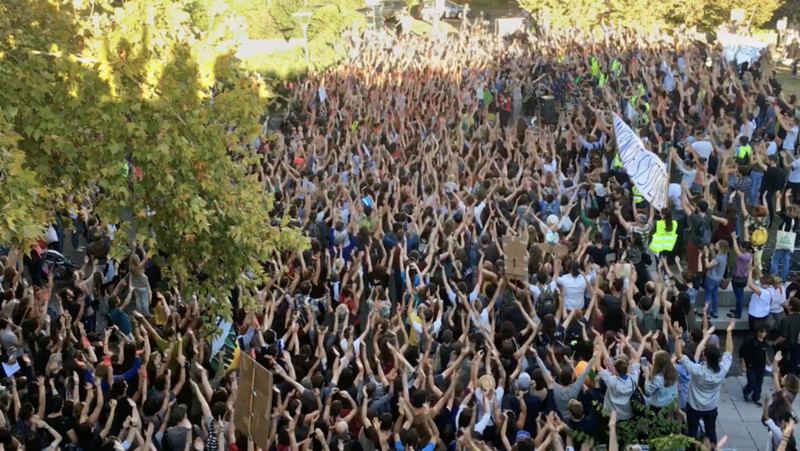
THE GODFATHER OF THE OCEAN
by Martin Boudot, Hugo Van Offel, France
He is “The Godfather of the Oceans”. Junchang Wu is the leader of a criminal network trafficking “Totoaba”, an endangered fish living in Mexican waters. Known as the “cocaine of the sea” for its lucrative price – up to 50,000 euros per kilo – totoaba is said to have miraculous properties according to traditional Chinese medicine. This traffic of endangered species sees the unique collaboration of two of the most violent criminal organization in the world: the Mexican cartels and the Chinese mafia. Interpol, the Mexican and Chinese authorities are on the trail of Junchang Wu. They have already arrested several members of his network and are said to be about to put an end to the run of the “Godfather of the Oceans”, targeted by a red notice.
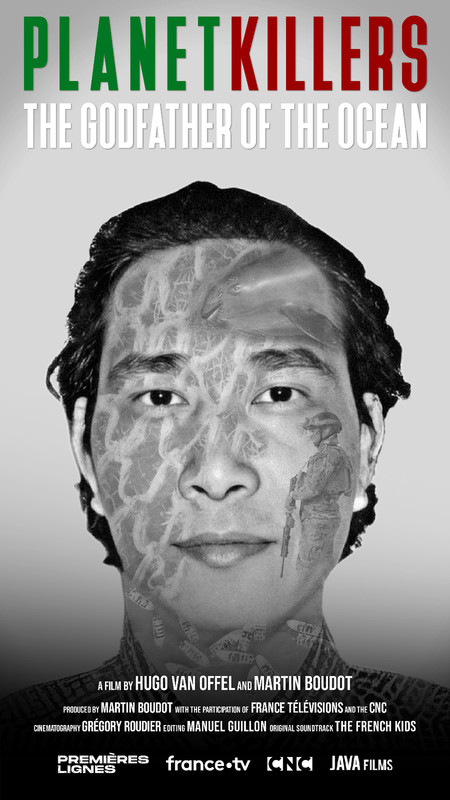
THE HONEY MOVIE
by Sasha Nikitin, Republic of Moldova
A man’s journey to show the true value of honey and its purpose for humanity. The film follows the hero for 30 days, thru 6 different countries, eating only honey for the entire duration of filming. It explores how different cultures relate to this product, how they cultivate it and dispels the myth that honey and sugar are the same. From the tribes of Ethiopia, to the modern European techniques, the mountains of Kyrgyzstan, and the jungles of Java – the film unravels how much work a jar of honey really contains, the importance of bees, and how miraculous this product really is.
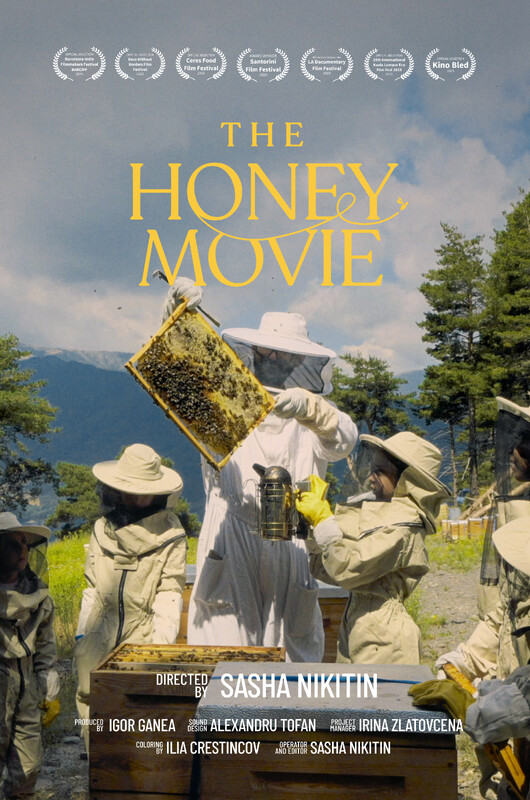
THE WITNESS IS A WHALE
by Nick Dean, Cheryl Dean, United States
A detective story spanning 60 years and half the globe, The Witness Is a Whale documents the uncovering of a massive illegal and secret slaughter of over 200,000 whales by the Soviet Union and Japan in the 1960’s, an act described by scientists as “one of the greatest environmental crimes of the 20th century.” Using interviews with Soviet era whaling scientists and whalers, contemporary conservation biologists from around the world, along with rare personal archival material, The Witness Is a Whale tells this story for the first time. What starts as an exposure of Soviet illegal whaling leads into a larger and darker story, as former Soviet whalers accuse Japan of also secretly killing whales, an act that Japan has never confessed to, even now as they reinstate commercial whaling. The ramifications of removing so many whales from the ocean are revealed with examples of whales exhibiting both intimate and previously undocumented behavior. This is accompanied by descriptions of the successful recovery of many whale populations and our increasing scientific understanding of their importance in ocean ecosystems.
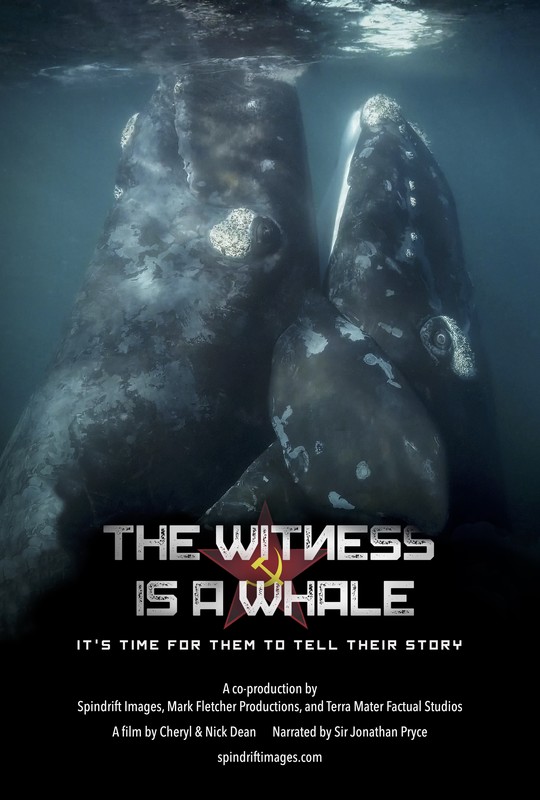
TO SEE THE SNOW LEOPARD
by Anna Ganshina, Russian Federation
“To see a snow leopard is to see God.” It’s a film about the search of the snow leopard – a beautiful and rare animal. There are only a few thousand of them left on the planet. Most of the animals have been given names but almost no one has seen them. This is a story about the mystery of human’s contact with another life, with wild nature, and the search for the lost source of inner strength. Scientists, hunters, shamans, tourists – the leopard sees them, but they do not see him.
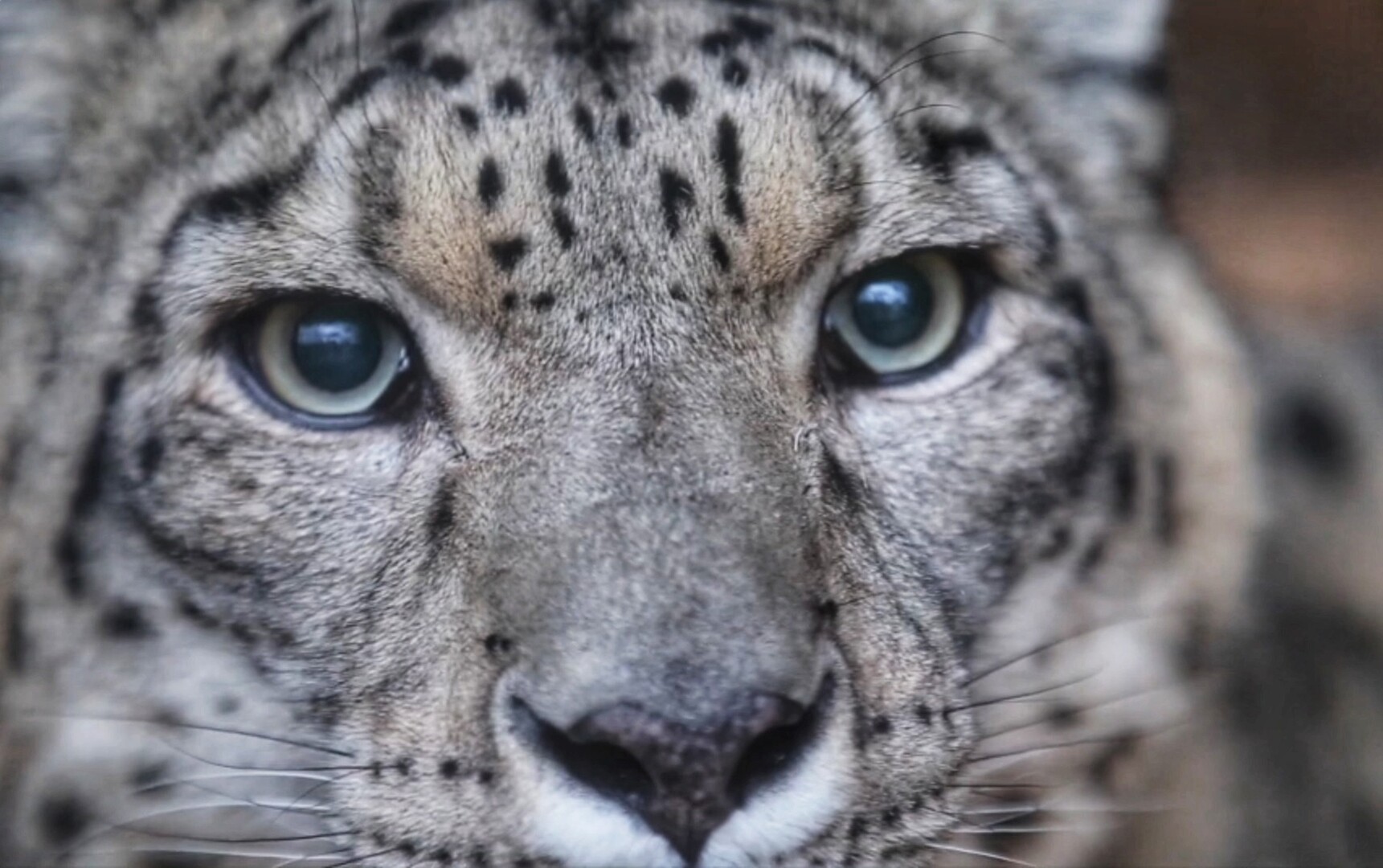
UNHUSK
by Jue Wang, China
Xiong Guizhi works the magic of growing rice; she can help bring abundant of rice from elements of nature; pine leaves, spring water, animals and flowers are all listening to her. She is one of the rice farmers from Yunnan Province, China. More than 10 years ago, cameras were given to 5 local farmers from 4 ethnic groups to documents their rice farming life. The amazing 101 selected photos became the photo book <Rice is Life> and made domestic as well as global attention to rice species and rice culture heritage protection. The story of <Rice is Life> inspired many content creators to work on environmental issue through non-fiction and visual storytelling, including Wang Jue. She visits these farmers 10 years later, found a lot of the scenes in the photos gone. A simple question was raised: Who is going to grow the rice? With shock and sorrow, we documented the change for the 5 farmers and their hometown, trying to find out the social, economic cause of the change, and its impact on culture and lifestyle.
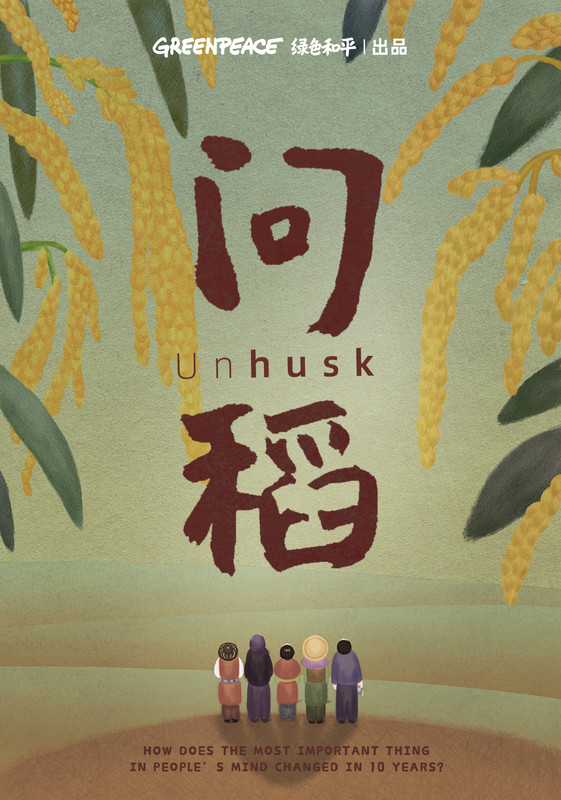
Short Documentary
AN EARTHY ODE TO Teeyee…Teeweet…
by Dr Lokesh Mosale, India
The Yellow -Wattled Lapwing is a ground bird. However, rapid urbanization and greed of man in the name of development has hit the ecosystem. The struggle of this bird is documented in ‘An Earthy Ode to Teeyee teeyee teeweet’. For procreation, the mating ritual of these birds involves the male serenading the female. The males do not display their supremacy by fighting with other males. If the female rejects the advances of the male, he withdraws. This new finding is based on the observation made while filming the birds. This earthy bird that does not live on trees or bushes is a creature that has a close knit bond with those who dwell far away from cities. This bird is endearing to Indian poets, villagers and common folk. Development and urbanization has taken its toll on the bird. Yet, it continues to tweet despite the challenges it faces not only in the changing environment but also in the wild. This film is a presentation of Development politics. Adding to this is the background of the film maker’s societal and journalistic approach.
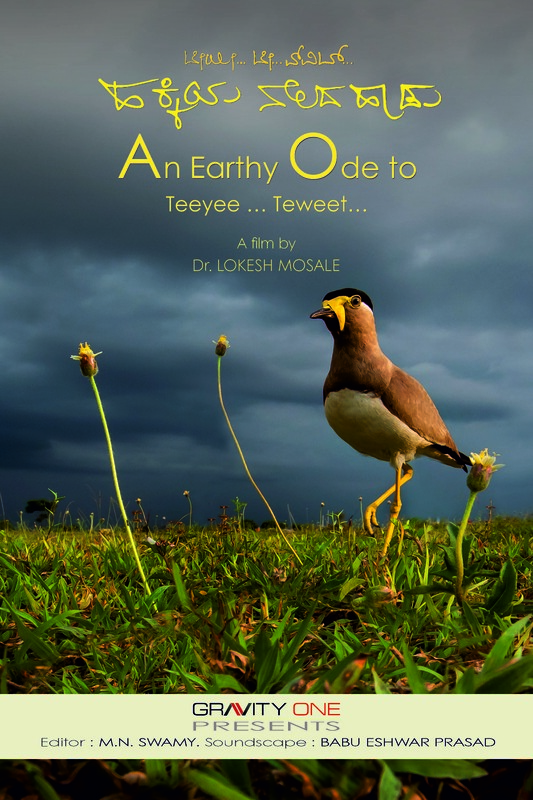
BARE METAL
by Brandon Robert Gries, Ryan Freng, John Shoemaker, United States
Microsoft, Google, META, and AWS are some of the biggest single-power consumers in the world. Along with other digital infrastructure companies’ consumption, they make up 2.4% of the world’s energy use. This film details the digital infrastructure industry’s work to reduce their carbon footprint in an effort to lower carbon emissions and help save the world.
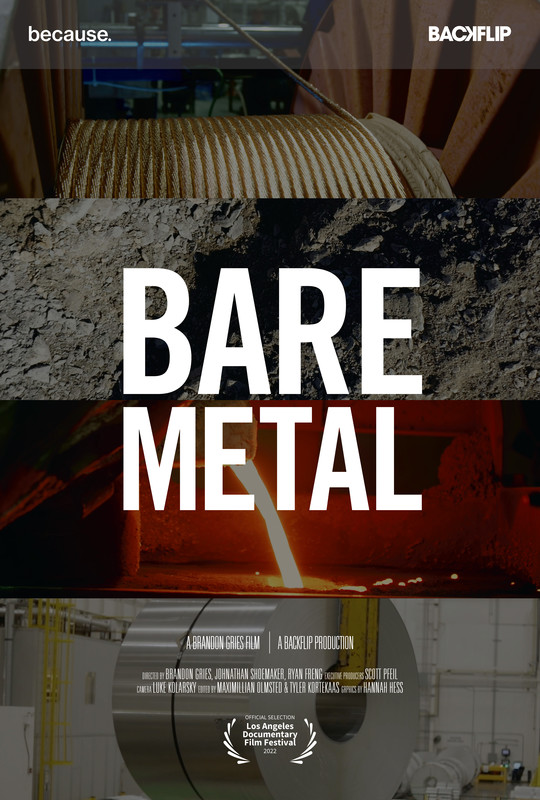
BEHIND THE SEEN
by Robin Gurney, Lawrence Blair, Indonesia
Deep within this adventure documentary with Dr. Lawrence Blair is the discovery of what lies hidden in plain sight: consciousness within nature. An original SAVEarth Studios production shot amidst the Forgotten Islands of Indonesia, this follow-up to Ring of Fire reminds us that we aren’t so different from plants and animals after all.
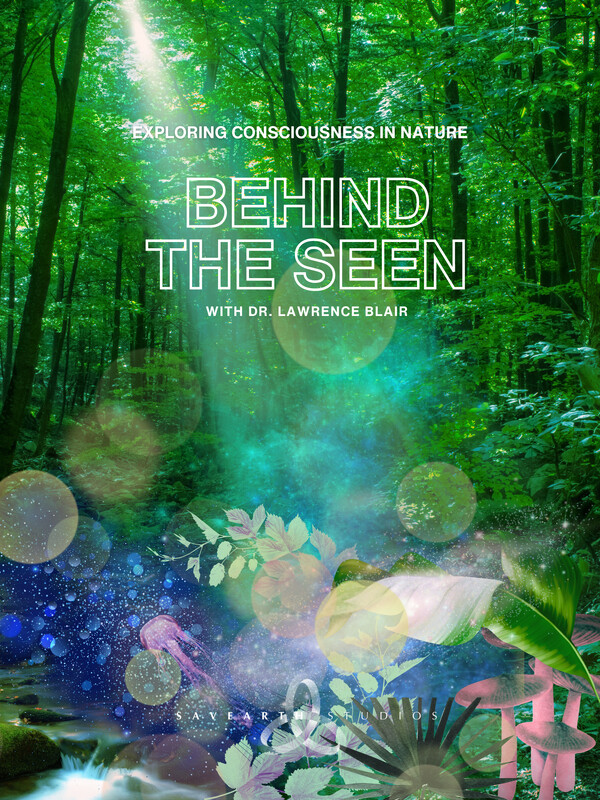
CRY OF THE GLOSSY
by Tim Brown, Michael Portway, Australia
Taking us on a journey through the forested hills of the NSW Southern Highlands (Australia), poet and Gunai woman, Kirli Saunders, reflects on the special place the endangered Glossy Black Cockatoo holds in her heart and culture.
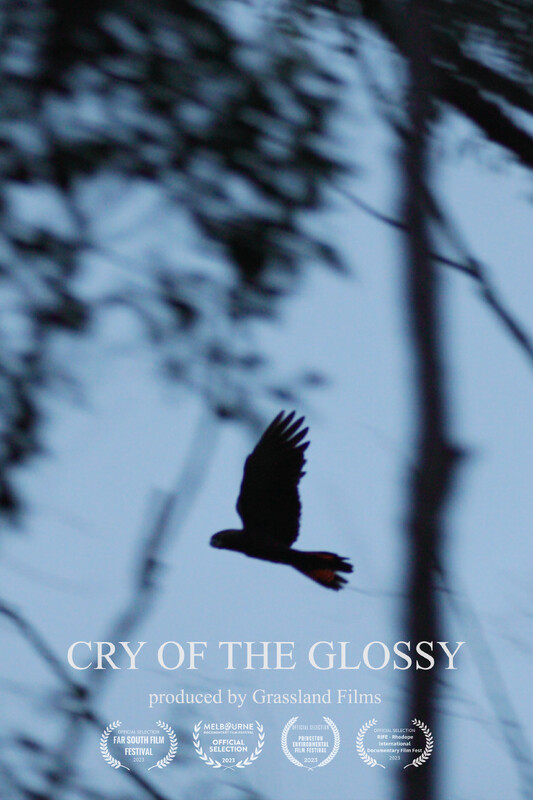
DANTE’S PARADISE
by Osseily Hanna, Mexico
Dante Aguilar sees the rapid degradation of the planet and applies his skills in environmental conservation and butterfly rearing to make a positive impact in the heart of Mexico City. He is joined by a range of people who are also committed to make the world a naturally balanced place. For Dante, everything is at stake: from the lives of butterflies to the future of the planet.

DUKHU MAJHI – SON OF THE BARREN LAND
by Somnath Mondal, India
This documentary is regarding a relentless struggle of a solitary man in his unique way to save the mother earth. The old man – Dukhu Majhi lives in the district of Purulia (W. Bengal), where the temperature rises upto 50 degree Celsius in the summer. He had somehow been inspired by his father in childhood and later on by a Govt. campaign on the need of plantation. There he came to know how trees invite rain and supply oxygen in the environment. He also feels that people need shadows from the scorching sun. Armed daily with two canisters of water, sacks, shovels, burnt wood & saplings, all mounted on a cycle, a poor, completely-illiterate old villager spends his years planting trees at roadsides, school premises, & wherever else he can; & taking proper care of them. Over the years, Dukhu Majhi has perfected his own unique method of preparation, plantation, & nurturing. To ensure that no passer-by dares touch them, he covers his newly-planted saplings with cloth taken from the nearby crematorium. This poor and completely illiterate man has a strong philosophy of life – that too is very interesting.
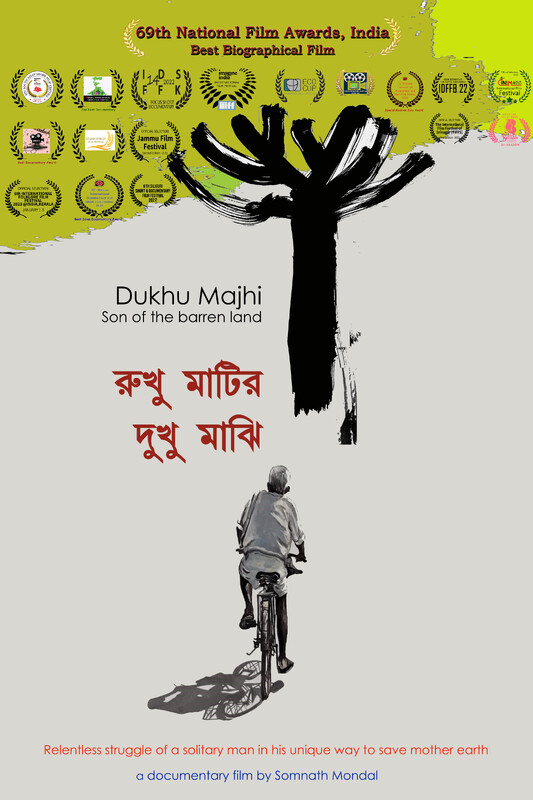
ECOTONE
by Rüdiger Ortiz-Álvarez, Spain
An ecotone is like a frontier, where two distinct ecosystems interact and communicate. Here, this concept serves as a metaphor for humans and nature as separate entities but still thriving together through sound. In La Gomera (Canary Islands), people speak through the clouds. They use Silbo-Gomero, a long-lasting trait of human connection to nature, which mixes with the natural soundscapes: birds, insects, wind, rain…, all blending in a single symphony with its own seasonal and social dynamics. In a hyperconnected digital world, this place encourages us to stop and listen, just like our ancestors, and reflect on our place within the ecosystems.
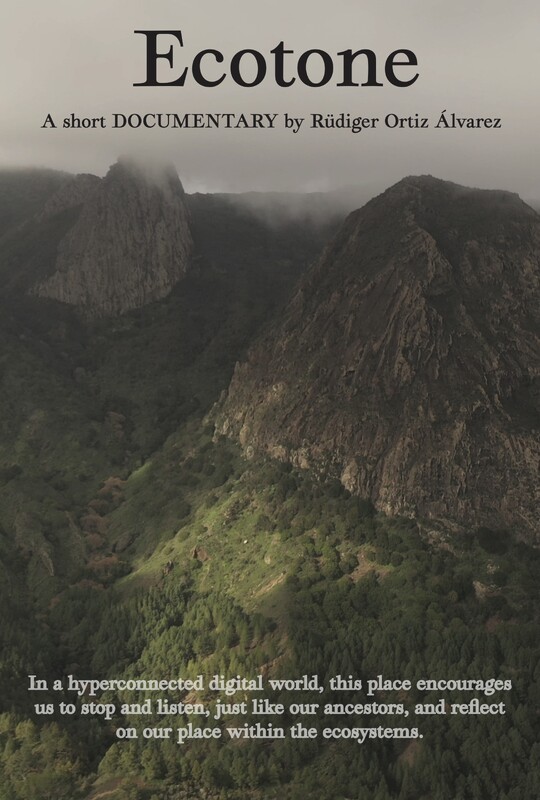
FINDING SOLO
by Myles Storey United Kingdom
Amongst the hustle and bustle of Kuala Lumpur city lies Bukit Serdang, an isolated forest, home to one of our closest living relatives. Gibbons live in small family groups and mated pairs sing duets every morning in a coordinated fashion, but this isolated forest only has one song. Finding Solo follows Malaysian filmmaker, Myles Storey, as he returns home in search of Solo, a white-handed gibbon believed to be the last of his kind in Bukit Serdang. With help from a primate photographer, local hikers, and Malaysia’s leading gibbon expert, Myles tracks down Solo, discovers how unique gibbons are and witnesses the direct impact that human development can have on their lives. This is Solo’s story, but what will he teach us about ourselves?
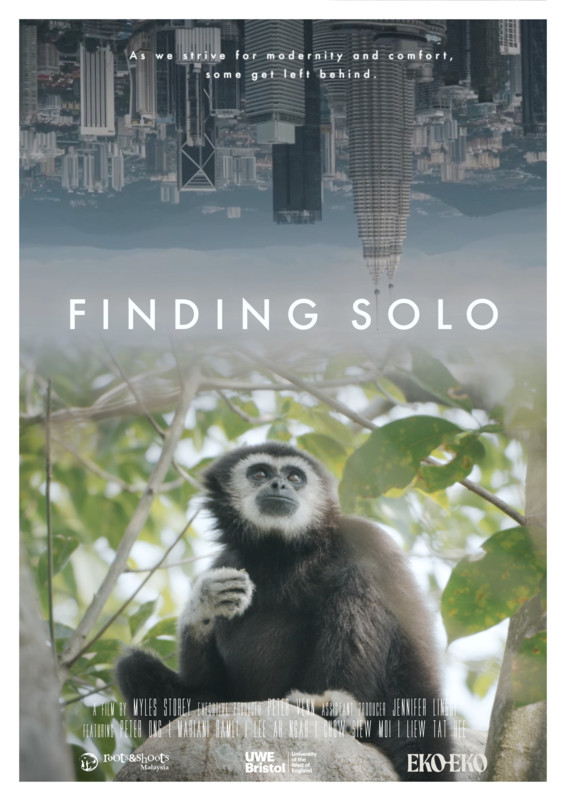
FLYING IN TOKYO
by Fumika Yazaki, Japan
Tokyo is known as one of the biggest cities in the world and people don’t expect to encounter wildlife there. However, Western Tokyo is full of nature, and Mt. Takao, which is only one hour by train away from the city center, is a place where one can encounter nature and many wild animals such as squirrels, badgers, and raccoons even though it is easily accessible from central Tokyo. The most popular wildlife there is the Japanese Giant Flying Squirrel. This species, endemic to Japan, is abundant in Mt. Takao. Mt. Takao is rich in biodiversity because of a special relationship between Japanese culture and the mountain. The purpose of this film is to make people aware of it, to let them know that their are wonderful nature and wildlife on their doorsteps.

GARDEN MINISTRY
by Kerri Pang, United States
A joyful portrait of Reverend Dallas Conyers–how she survived environmental racism, became a climate organizer out of necessity, and her passion for healing the climate crisis through community organizing and her frontyard garden.

GARDENING MARINE FORESTS: A HANDS-ON APPROACH TO RESTORATION
by Stefan Andrews, Australia
What if people could be the secret to transforming ocean deserts into rich forests filled with an abundance of life? Join two marine scientists as they explore how a hands-on approach to marine restoration is working to revive marine kelp forests in South Korea. During their trip, they witness how a deep connection with the ocean is inspiring change. In Korea, this connection runs across society, from a hundreds year old guild of female free divers to the Korea Fisheries Agency using the latest techniques to manage their kelp forests. By recognising that while people may take from the sea, people can also take care of the sea, they are charting a new course to thriving kelp forests all around the world.
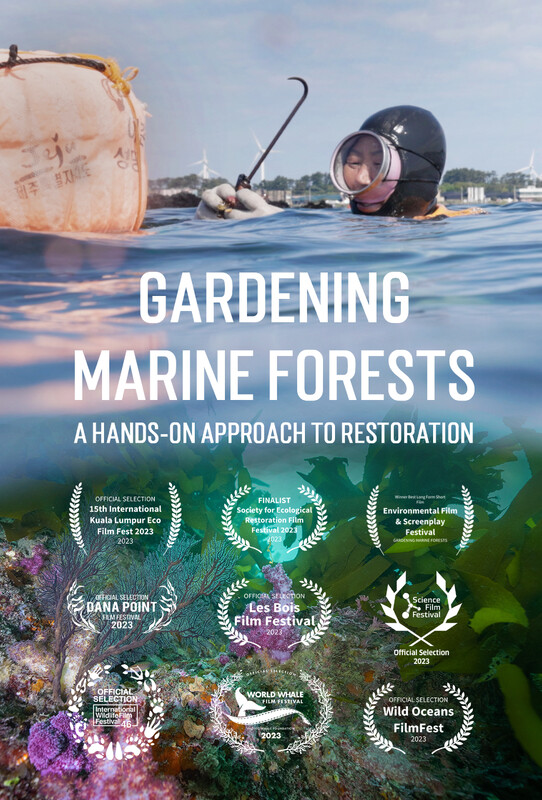
GIVE ME A LITTLE LAND… A LOVING SHORE FOR THE SEA TURTLES…
by Sasi Kumar Ambalathara, India
About This Environmental Documentary . Sea turtles are one of the endangered creatures listed on the IUCN Red list. One Of the five species of sea turtles found in the oceans four are found on the coasts of Kerala. ” Olive Ridley Sea Turtles ” come for nesting…. Nature Lovers Volunteers from the general public protect the eggs from predators, day and night and the hatchlings are released into the ocean. The efforts are very valuable as the Olive Ridleys have been losing much of their habitat due to pollution and development in the coastal regions. Oil spills, plastic debris, fishing nets, and some fishing practices are harmful to the animals. More than 10,00000 baby turtles have hatched from Kerala’s shores and swam into the sea for the past two decades, through conservation efforts with public participation. Awareness is made in society that turtles and eggs are not for consumption but they are wild animals that have to be protected . This documentary aims also to convey the message that if humans fail to rise up for the conservation of nature and animals, the lives of all living creatures will be affected. It hinders the survival of future generations. Save the Ocean Save Turtles…. Save the Ecosystem … This documentary film directed by senior director Sasikumar Ambalathara who did lot of social and relevant issues and topics in DD 1 and Pvt . Channels and for Government and NGO from 20 years more.

HEARING FROM THE DOLPHIN
by 弘榤 張, Taiwan
Hundreds of offshore wind turbines are being built in close proximity to the habitat of endangered white dolphins, as a cetacean scholar tries to find a balance between development and marine ecology.
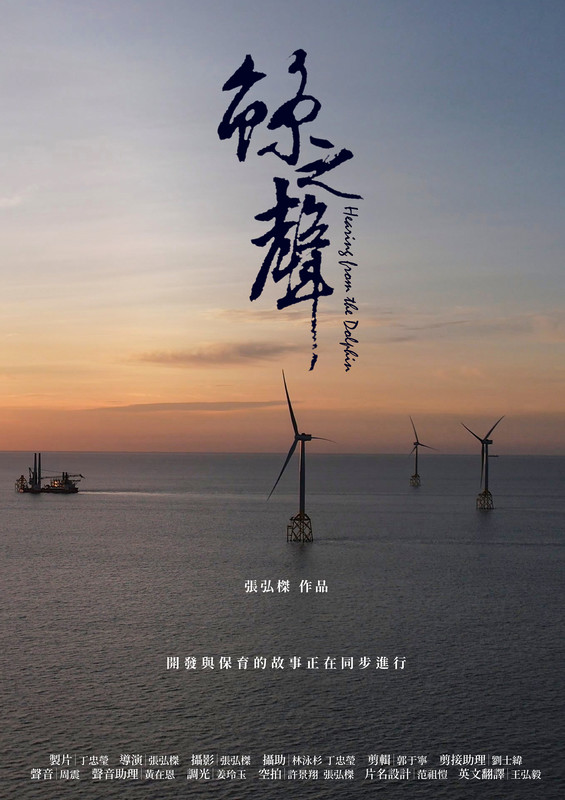
KAURI K9s
by Wen Qing Ng, Malaysia
Kauri K9s goes behind the scenes with Pip and Mawhai, two canines-in-training to detect a deadly disease killing off Aotearoa’s majestic forest giants — kauri trees. If successful, these pups will be the first conservation heroes of their kind, earning their stripes as specialist kauri dieback sniffer dogs.

LOST LAND? WETLANDS!
by JIN-YANG LI, Taiwan
Whenever it is dusk, the water surface of the ChengLong Wetlands reflects the orange-red of the sunset. Such beautiful scenery can always attract people who have not experienced the history, how can they imagine the huge transformation from fields to sea?
雲林口湖鄉成龍溼地因地層下陷和颱風所致,讓這裡的土壤積水不退而失去農耕價值,也一度讓村民失去希望。但經過二、三十年的時間演替,更因舉辦「成龍溼地國際環境藝術節」,每年吸引許多國內外藝術家到此駐村創作,超凡的裝置地景和萬種風情的自然生態,成為雲林極具特色的濕地生態園區。 幾年來,藝術季的舉辦,促使全村上下一心,將老一輩口中泡水無用的土地,融入在地生活的藝術創作,詮釋人與自然的關係,居民開始對濕地和自己家鄉有了不一樣的看法,他們用在地的聲音與力量,希望修復人與自然之間的關係,與水共生。成龍村的改變讓人驚喜,在地對濕地保育與環境永續更加投入,也讓大眾看見雲林成龍溼地不一樣的未來。
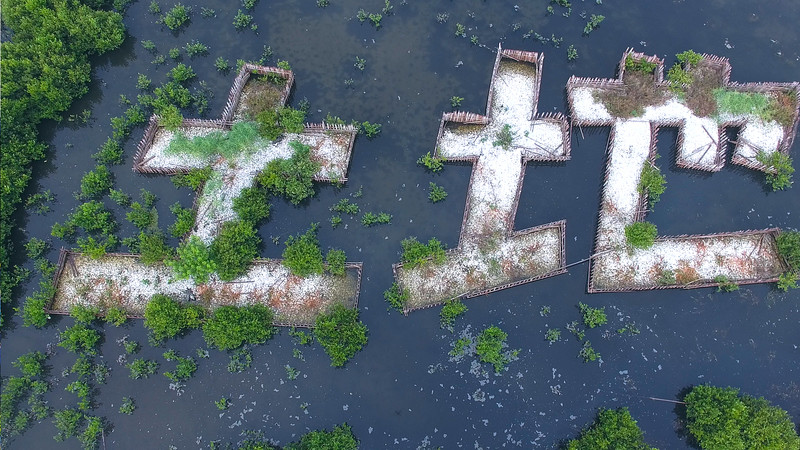
LOST LANDS
by Andy Ball, United Kingdom
Cambodia’s insatiable appetite for sand leaves two families left to bear the consequences in the wake of the country’s rapid development.

MARK IN THE COLOR OF ORANGE
by Piotr Karol Bakuła, Poland
295th day of protest. Hasia, an activist, lives on the blockage that stops logging of preacious, old forest on Polish outskirts. She has to confront state politics, locals’ hostility and spartan conditions. The fight over this small part of Carpatihia mountains turns into a fight over brighter future.

MELATI TERAKHIR
by Riandi Akbar, Indonesia
Semonet Hamlet, an area located on the north coast of Pekalongan Regency, Central Java, Indonesian, has become like a small island which is separated from the mainland due to the process of land subsidence that has hit most of the coast of Java Island. The hamlet which has an area of about 12 hectares was originally inhabited by 265 people and now only 25 people left, living and surviving. The majority of Semonet Hamlet residents used to work as jasmine farmers. However, the unstoppable crash of the waves destroyed the jasmine plantation ecosystem so that they had to change their profession to become fishermen, not even a few of them that become unemployed.
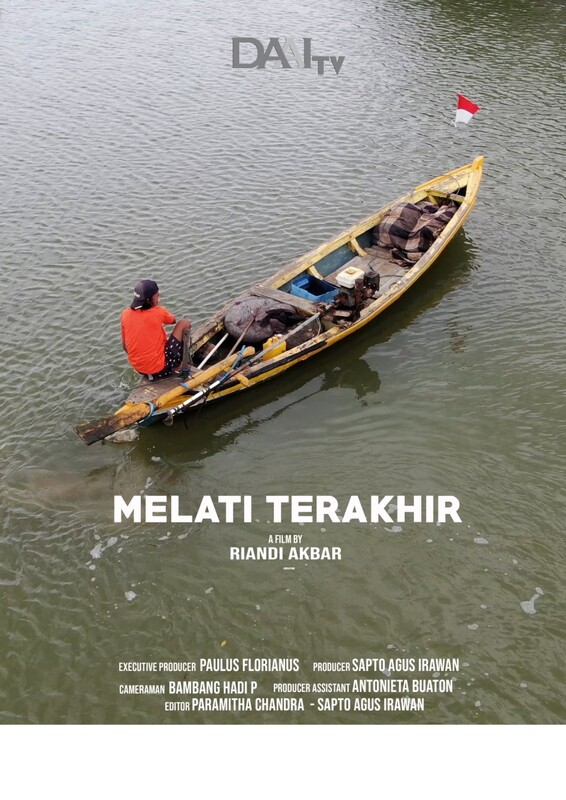
NOMADIC ISLAND – TOWARDS THIRD NATURE
by Mattia Mura Vannuzzi, Luxembourg
Nomadic Island: Towards Third Nature” is a thought-provoking 20-minute documentary that takes you on a journey to a unique artist residency program in Differdange, Luxembourg. Join a diverse group of international artists as they explore the intersection of sustainability, community building, and art, and discover new solutions for addressing environmental challenges through collaboration and experimentation. The film also delves into the concept of “Third Nature,” a fascinating term from social ecology that challenges our traditional notions of the natural and human-made environment. And with the inclusion of the first forest occupation in Luxembourg, the documentary showcases the power of community-led innovation, art, and activism in promoting a more sustainable future.
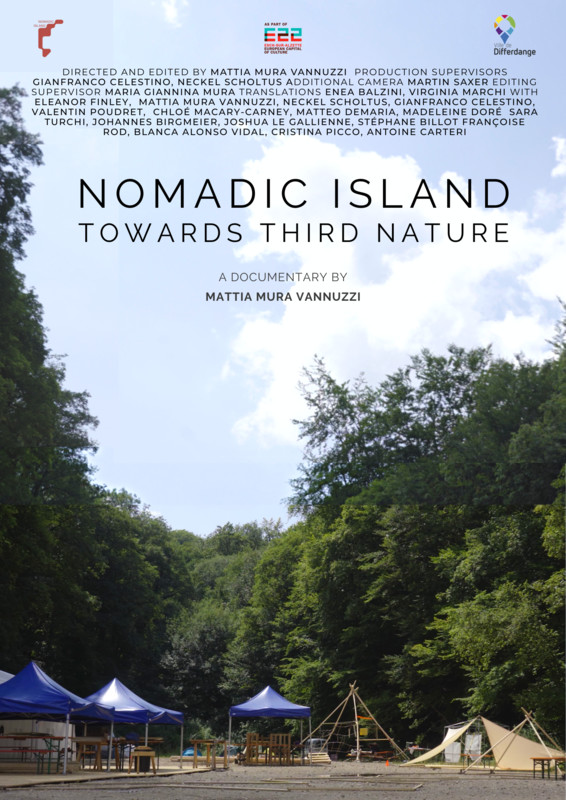
RESAN, THE STORY OF TREES
by Antonieta Buaton, Indonesia
Departing from a sense of concern for the condition of the Gunungkidul Regency area which is often hit by drought during the dry season, it encourages a sense of concern for a group of people to take real action in an effort to save water sources and trees in the Gunungkidul area. From there a small community was formed, namely the Resan community or in Javanese “Wreksan” which means the tree of life. Judging from the meaning of its name, the social movement carried out by this community focuses on tree planting and efforts to save springs. Unfortunately, some residents see them as “tree worshipers” or even “demon caretakers”. This is due to their actions that prioritize local wisdom. When in action, they also wrap “Langse” cloth on the existing big trees, similar to what the Balinese do. The Nglangse ritual is known as a way to glorify old and large trees with the hope that these trees will be maintained and ultimately the natural conditions around them will also be maintained.
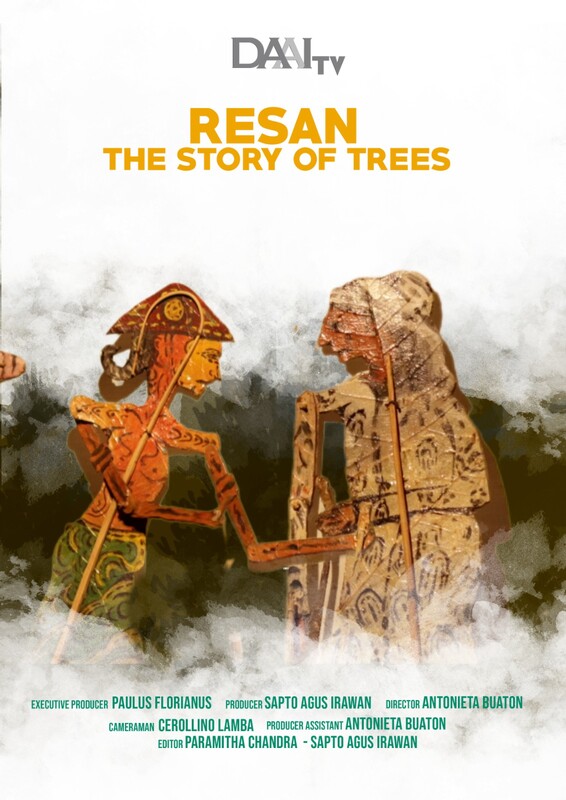
SHADOWS IN THE SNOW: SNOW LEOPARDS
by Abdullah Khann, Pakistan
Snow Leopards are the world’s most elusive big cats, with a home range of 1600 square km. Without a large wilderness they won’t survive. But due to climate change and human encroachment, their habitat is quickly shrinking. With less natural prey to eat, snow leopards have increasingly attacked domesticated livestock. We follow one angry herder who has lost more than a hundred animals to snow leopards. And we profile Hussain Ali Khan, a former hunter now tourist guide, who wholeheartedly works to protect the big cats.

SIX FEET UNDER (2022)
by Ruby Browne, United Kingdom
A glimpse into the world of regenerative agriculture, and the fight to save Britain from the growing crisis of soil death – all in a day’s work. Through a series of conversations with leading professionals at Yeo Valley Organic Farms and the Soil Association, we learn about the damage we have caused to British soils and the regenerative and organic farming methods which promise to save it. In working with our soils rather than against them, we may nurture the beating heart of British agriculture and in return, it may be our soils that save us from the devastating effects of climate change. Through the insight of an impassioned cast, hope for an organic and regenerated Britain blossoms.
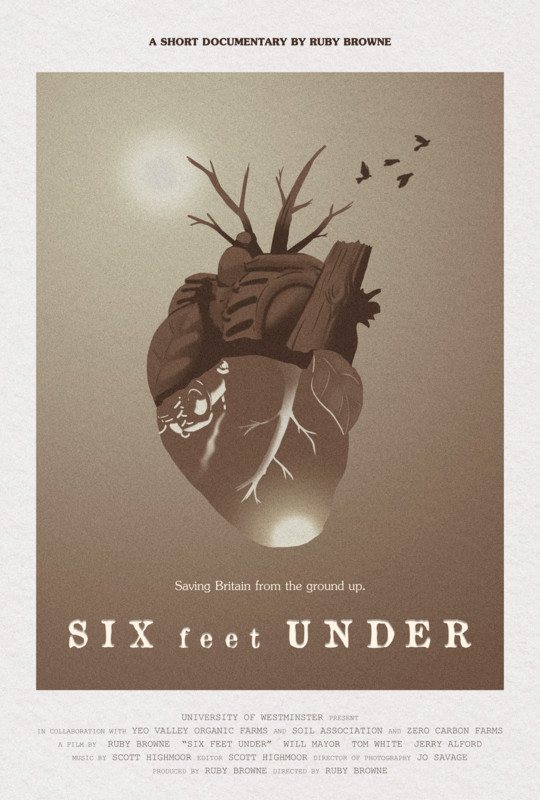
THE ELUSIVE PARADISE
by Yoong Wah Alex Wong, Malaysia
The Elusive Paradise depicted reality in contrast, where a serene landscape with invaluable natural heritage between the land and the sea is left with waste and garbages. Next steps? Let us raise awareness and alert the sea dwellers and residents to be part of the solution, not the pollution. People should live and travel with a conscious mind to ensure that green lungs continue to prevail. Only healthy ecosystems can provide abundant resources for humanity to thrive.
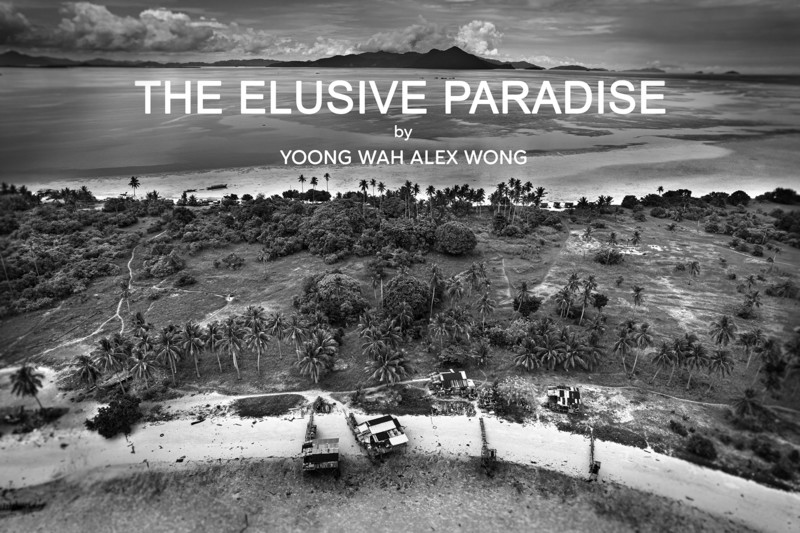
THE INDICATORS
by Kurt Sensenbrenner, United States
Two high school girls trek into the rainforest in hopes of protecting what’s left of the biodiversity in their jungle-bordering community. Torti is a small town in Eastern Panama, a region known for its rich biodiversity. This biodiversity, however, is put at risk by high rates of deforestation for timber extraction and monoculture. By studying the local butterfly populations, the teenagers found the butterflies could be used as bioindicators of forest health. After submitting their findings to a 13-country wide science fair, all they can do is wait to hear what the scientific community thinks.
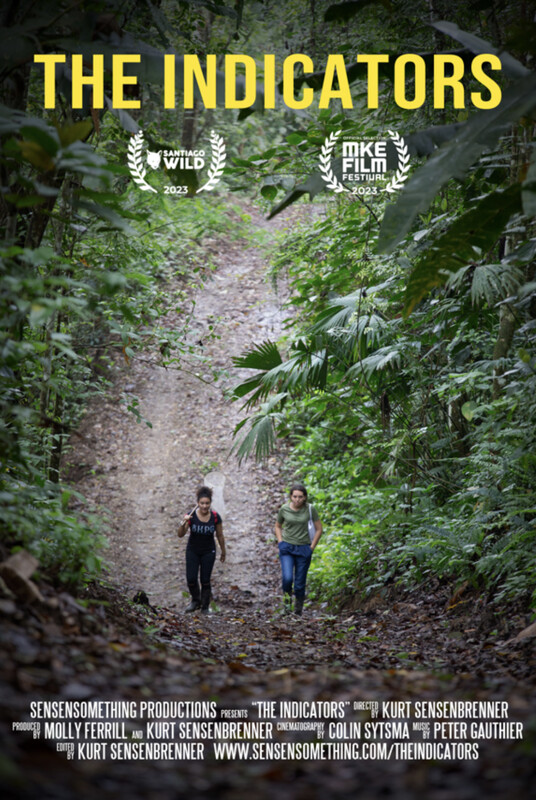
THE LAND OF THE BEAR
by Constantinos Christou, Italy
The Marsican Brown Bear imprinted its legacy in the Central Apennines centuries ago. This endemic species once thrived in the region, but it is now recognised as being endangered. Human interference has greatly compromised the bears’ potential to populate and survive in the area over the years. This film documents the lives and the challenges that the remaining bears face, raising awareness of Salviamo l’Orso’s efforts to preserve them.

THE LOST DRAGON
by Alex Spoerndli, Tobias Schreiner, Switzerland
One of the rarest lizards in the world is caught in the Indonesian jungle, exported across two international borders and dies miserably in the care of a European collector. And all this completely legally. This is the story of the silver monitor lizard, a relatively new and still completely unknown species that is already being traded on the international rare animal market. We follow the tracks of the monitor lizard from Indonesia to Japan to the USA and Switzerland, revealing how scurrilous animal traders, inconsistent legislation and toothless international agreements threaten biodiversity.

THE PIGEONS ARE TALKING
by Yi-Ying Huang, Hanna Park, Trevor Ji-En Poh, Yen Ee Choo, Not Specified
This is a documentary made by 4 friends living in Singapore, Taiwan and Korea. Throughout our conversation online, we talked about abandoned objects and urban development as images of the human-made world.

THE SHARK WITH A THOUSAND NAMES
by Hendrik Sebastian Schmitt, Germany
Rumor has it that some fishermen in Indonesia have a very special relationship with giants of the sea. A team of underwater filmmakers and photographers steps off the beaten path and take their cameras on a journey deep into an almost unknown region in Indonesia to discover a newly discovered whale shark population. They get up close and personal with the animals underwater, and tell a rare story of peaceful coexistence between humans and sharks – a story that we can take something away from.
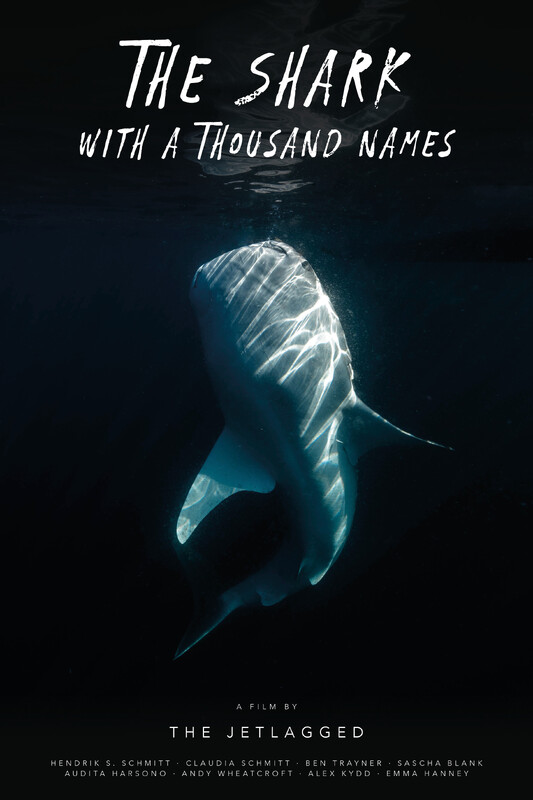
TO SOW
by Gravinda Putra Perdana, Indonesia
This is a documentary exploring Indonesian ecological economy practice in five provinces: Bali, East Kalimantan, Moluccas, East Nusa Tenggara, and Jakarta. These five stories represent five main sectors in reducing greenhouse gas emissions. The documentary primarily aims to promote social welfare and inclusivity, and environmental sustainability.
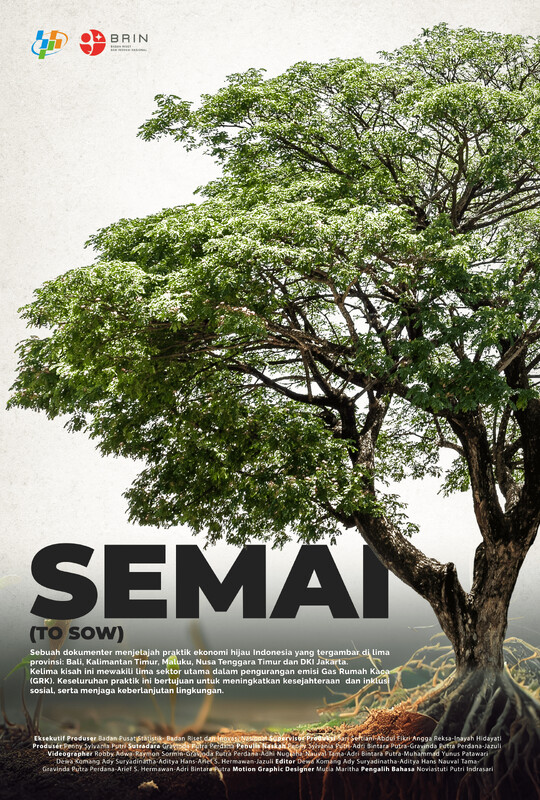
VALTELLINA, EUROPEAN NATURE
by Marco Tessaro, Italy
There’s a place in the Alps where the Mediterranean meets the boreal moors of northern Europe. Species from disparate habitats live here almost side-by-side. Extraordinary landscapes, from the lowlands to glaciers, are but a few steps from one another. This trove of biodiversity is threatened by human hands, but is also being fiercely defended by a network of protected areas that must increasingly be interconnected. This place is called Valtellina, where Europe’s nature comes together.
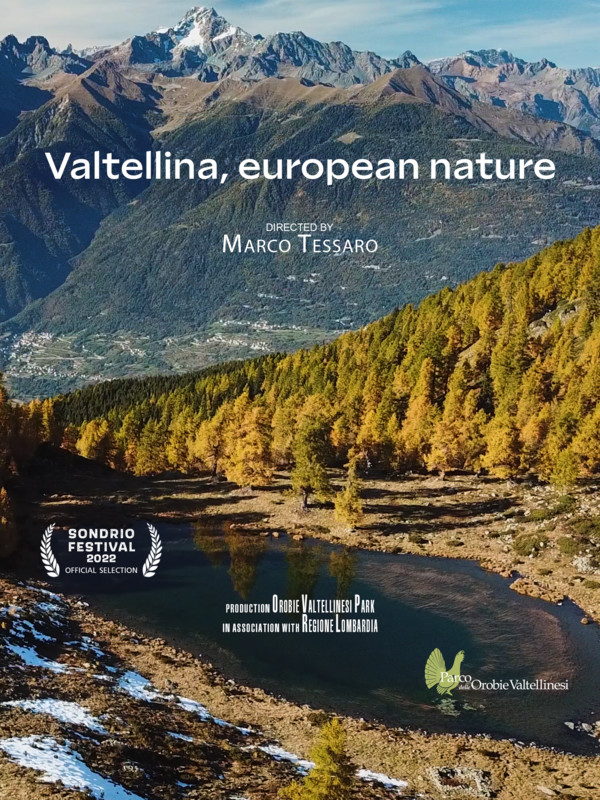
VEGAN TABLE
by Moonkyung Kim, Seong Heo, Republic of Korea
Reina, tired of gentrification in Seoul, moved to Jeju and embraced veganism. She made and sold vegan butter at the farmers’ market, which became popular. This led her to be connected with many people and community. And then she organizes a special vegan dining event with her farmer friends.

WAYURI
by Diana Gandara, Brazil
In the most preserved area of the Brazilian Amazon lives 23 indigenous ethnic groups and 16 native languages are talked, in addition to Brazilian Portuguese. The Wayuri Network of indigenous communicators of Rio Negro, operates here to give a voice for this population, so oppressed in the history of Brazil. The indigenous themselves produces podcasts, videos, photos, lives, audios and texts for, and about, this 750 communities. During the pandemic they saved many lives. Wayuri Network won the Rule of Law Award 2022 in the Hague, thanks to the combat of fake news, which often target economic and political interests against indigenous peoples and forest preservation. Wayuri means “joint effort”. Despite the difficulties of to circulate information, they find creative ways to bring and create information about this place, so important for the world, despite suffers constant threats.
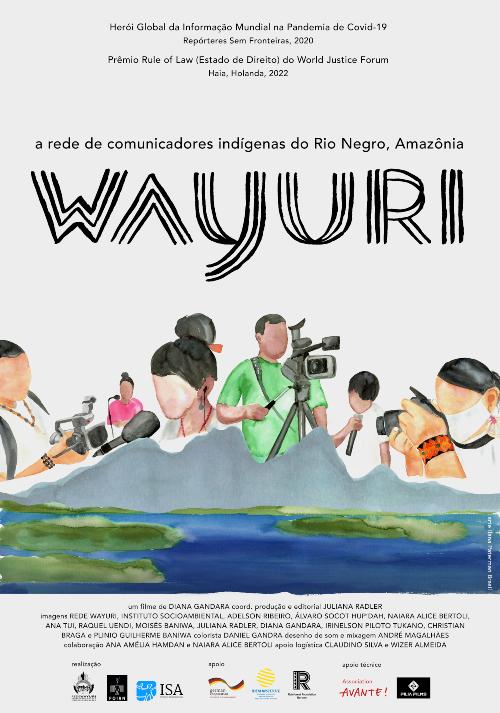
Short Film
#planB
by Ulrica de la Mar, Netherlands
You’re not too old to make the difference. How three generations have to deal with trash and to cope-with plastic waste. Could our planet survive if we don’t recycle? Time will tell.
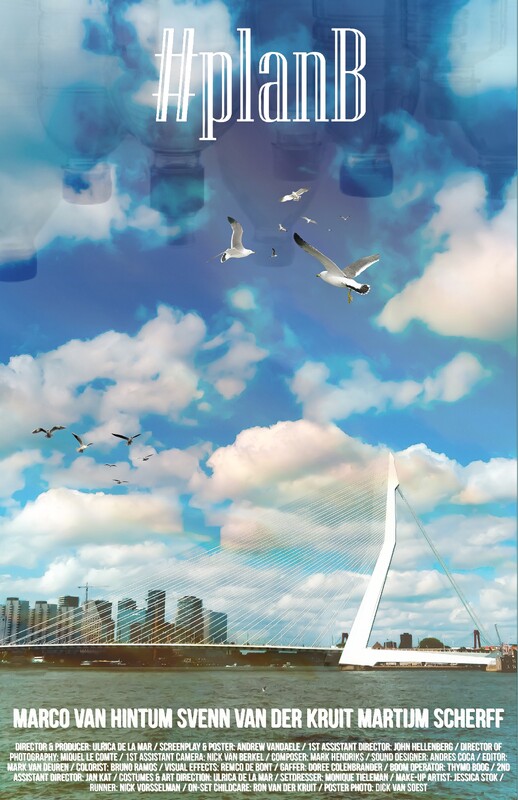
48 gradi / 118 °F
by Andrea Di Iorio, Italy
In un giorno in cui le temperature salgono senza sosta, una donna si ritrova bloccata nella sua macchina. La sua unica salvezza è l’aria condizionata, finché l’auto non si spegne. – On a day when temperatures rise relentlessly, a woman finds herself stuck in her car. Her only salvation is the air conditioning, until the car turns off.

A POET ON THE CRUISE
by Vincent Zheng, Zencat Dong, Switzerland
A young poet who lives in nowhere was invited by his friends to vacation on a cruise ship. He looked at the moon and wrote that he is a cloud in the moon. He looked at the night sea and realized that God lives in everyone’s heart. he was like a seagull wearing a hard hat, flying in the world of inspiration in his mind, the musician he met when he was a child, wrapped the notes with leaves, and went on a dream trip with him.
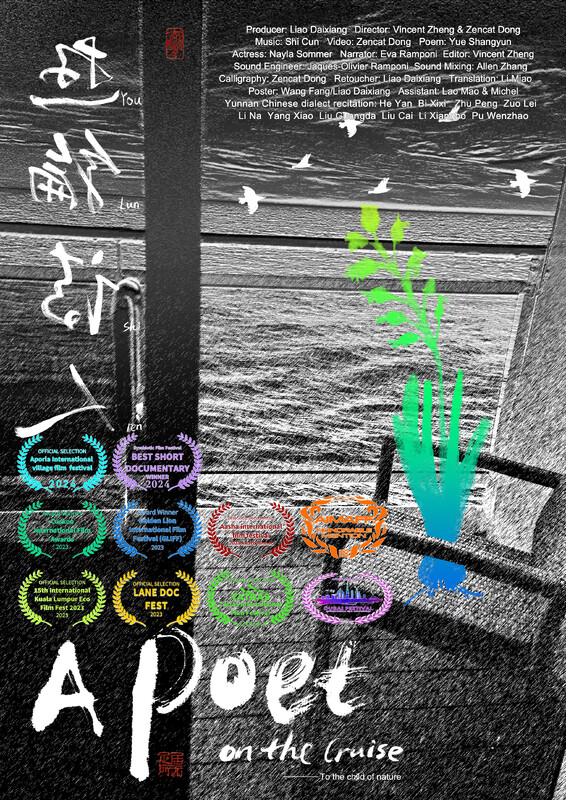
BORÉE
by Alex Dubois, Canada
In a dystopian future, a father explains to his daughter why the caribou on the Canadian quarter is now extinct.
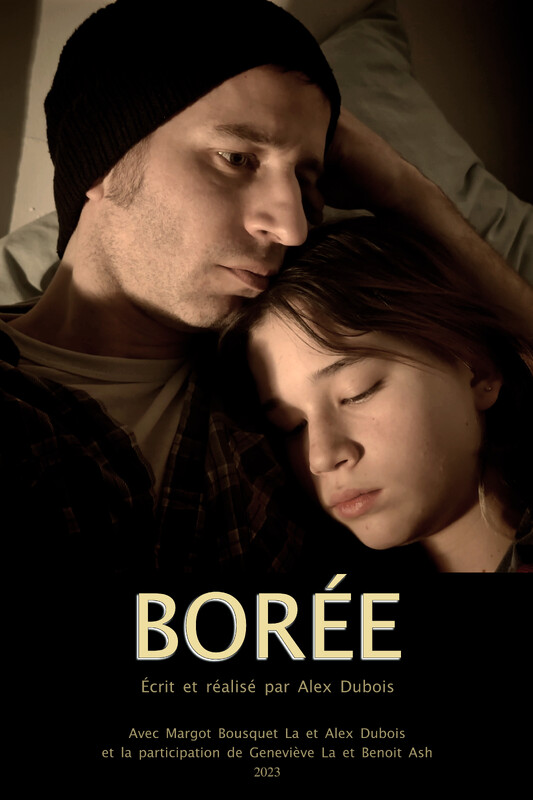
DISCARDED
by Ilana Goldman, United States
A solo dancer (wearing a dress made from the plastic trash she generated over four months) embodies simultaneously both a woman and planet Earth reckoning with the impact of humans on the environment. Through her dancing body, we see Earth’s resiliency and ability to adapt to accommodate outside forces, but also its vulnerability when fighting certain sustained assaults. *Filmed on location at Glacier National Park as Artists-in-Residence.
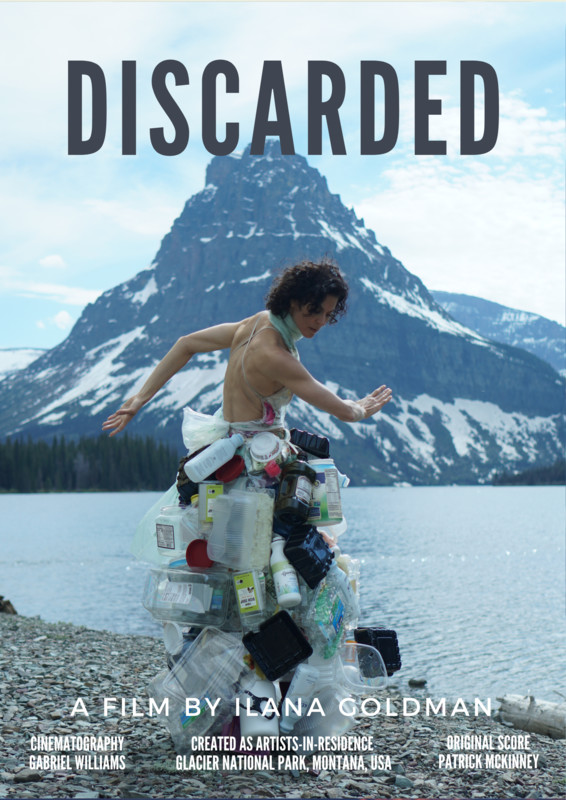
DRAGON FRUIT
by J.Brown, Canada
In a terrifying, dystopian future, fraught with violence and deception at every turn, a single mother desperately tries to grow a tiny dragon fruit sprout in the hope she can one day sell it for enough money to take a small vacation.
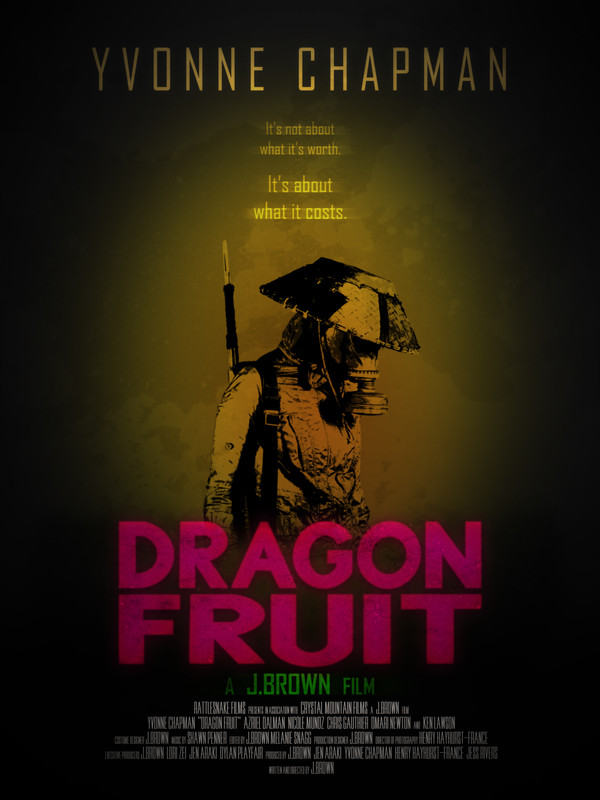
INSETTI – INSTECTS
by Greta Zamparini, Italy
Trapped in a shallow reality indifferent to the needs of Nature and the Soul, Adele, an eleven-year-old girl, performs a small act of rebellion that makes her find her voice and the strength to be 100% herself.
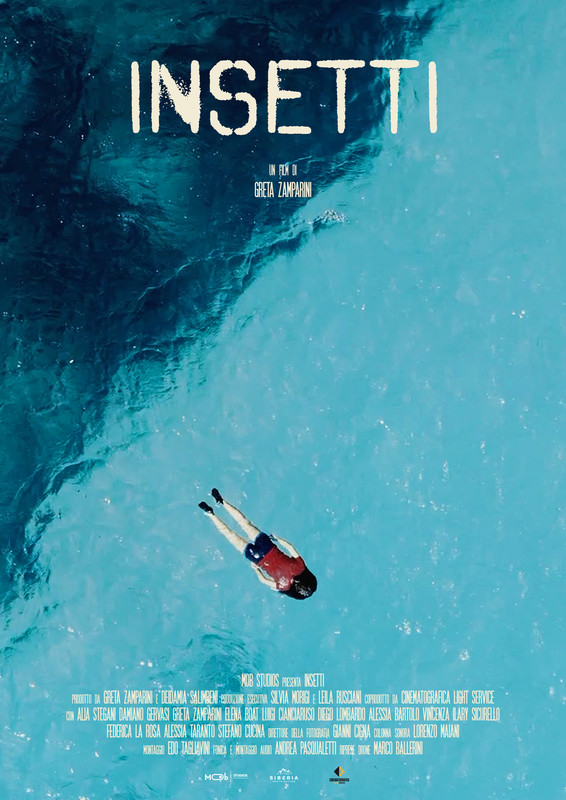
MESSAGES FROM THE ANIMALS – THE GIFT OF THE WOLF
by Elke Duerr, United States
We are the Wolf Nation, dwellers of the Northern Hemisphere, harbingers of the Spirit of the WILD. We are returning to take our place with you awake and aware and conscious humans at the dance of life.

PENTHOUSE
by Line Klungseth Johansen, Vegard Dahle, Norway
When a radio shows signs of life outside of their isolated and flooded apartment building a battle between friends begins.
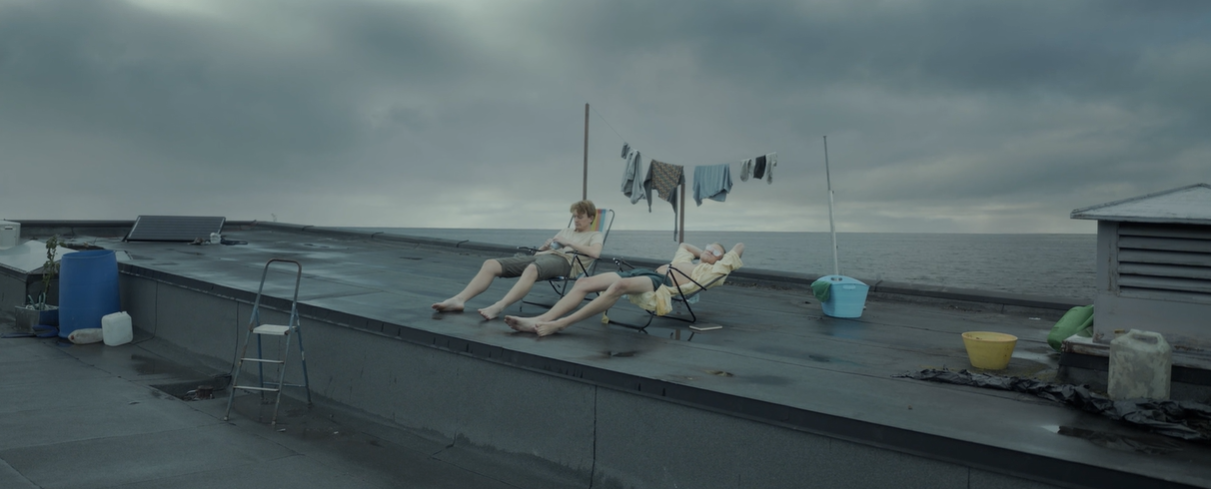
RISE, FALL, HOPE
by Alexandra Delgra, Tiana Distefano, Nina Fiala, Kevin Lu, Alice Phelan, Merlin Puhr, Angelo Schiroky, Austria
14-year-olds explore humanity’s stumbling struggle for sustainability.
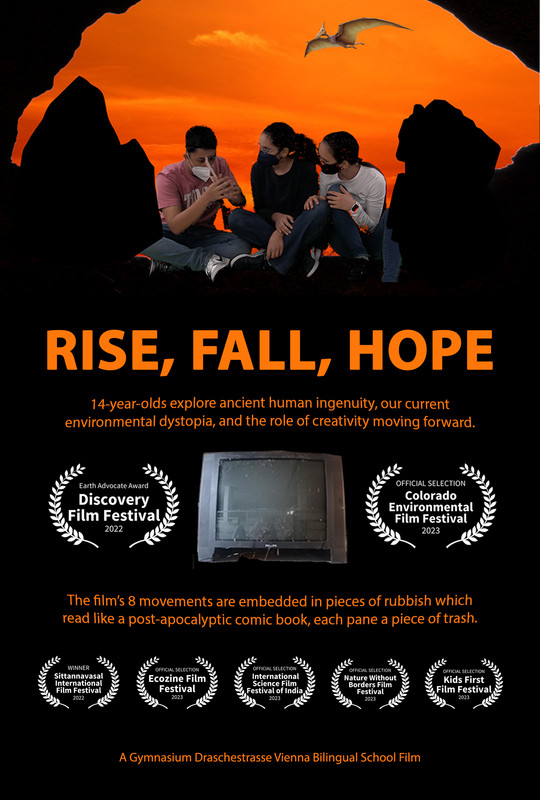
Salon des Refusés
by Mikael Forsberg, Sweden
Can a stubborn Swedish climate activist transform the fashion industry with his extreme pine tree clothing and unusual marketing strategy?

THE MEMORIES OF US
by Jerry Foo Thai Li, Malaysia
In a primary school classroom, Han Fei, a seemingly emotionless girl, is introduced to the concept of making EcoBricks by Mr. Bryan, a passionate environmentalist. However, Han Fei notices that her classmates and the people around her are not following the proper rules for creating EcoBricks. Undeterred, Han Fei takes it upon herself to gather materials from various sources around the school, including the trash cans and the cafeteria. Throughout the day, Han Fei faces pressure and criticism from her classmates, who comment on her unusual-looking EcoBrick and remind her of the upcoming exams. Despite the discouragement, Han Fei remains focused on her task. As the school day draws to a close, Bryan observes Han Fei still diligently working on her EcoBrick alone. It is then revealed that Han Fei’s seemingly emotionless demeanor masks a deep emotional connection to the project. She pours her heart into creating the EcoBrick, using materials that hold sentimental value and remind her of her late grandmother. Touched by Han Fei’s hidden motivation, Bryan realizes the significance of her actions. He encourages her to write a heartfelt note to her grandmother, expressing her love and sharing her experiences. With hope in his heart, Bryan suggests that the note will reach her grandmother in heaven, serving as a meaningful way for Han Fei to connect with her. This heartwarming revelation showcases Han Fei’s resilience and compassion, highlighting the transformative power of personal connections and emotional expression. Through her dedication to making the EcoBrick and the final act of writing the note, Han Fei not only contributes to the environment but also finds solace and closure in honoring her grandmother’s memory.
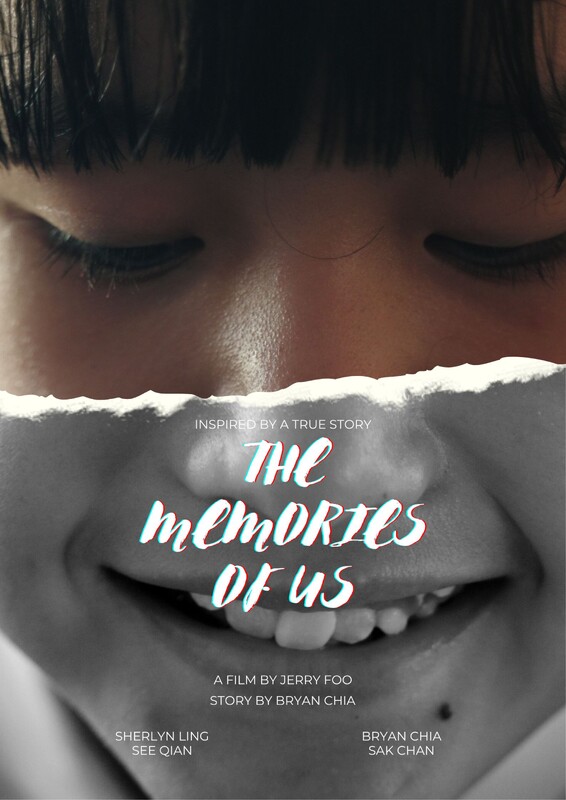
榴槤芭 DURIAN TREES
by 莊時俊 Cheun Shi Chin, Taiwan
位於馬來西亞的一座榴槤山,年邁的陳爸爲了捍衛自己一輩子開墾的榴槤芭,阻止政府和財團前來收地。他奮力的奔波 去爭取那政府當年承諾,卻不曾給予的土地證明。隨著生活日益窘迫,越來越多的農民選擇向財團簽約。陳爸與兒子在各自的利益與不捨下,各懷心思與掙扎…… This is a story about an old farmer constantly fighting against the government, to defend his durian orchard.

Animation
BATTLE PLAN
by John Banana, Mathilde Michea, France
A car ride with Mum results in an epiphany for a young girl who must imagine her way to a better future.Her ideas grow and with them the chance to make a real difference. Battle Plan, a musical ode to young activists everywhere.
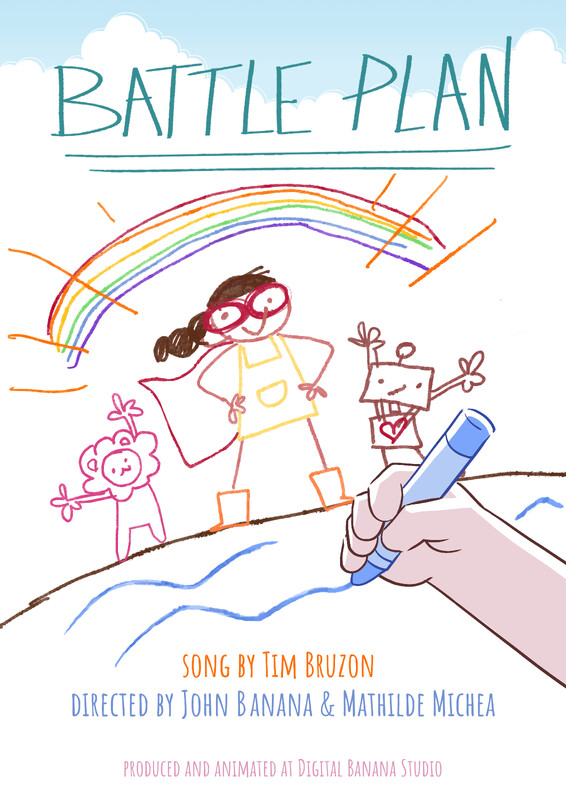
CHIMBORAZO
by Keila Cepeda, Spain
Chimborazo’s ice pickers have long been subjected for years to the inclemency of the volcano, located in the Ecuadorian Andes. In exchange, they crush some of its ice to provide for their people. Nowadays, it would be an occupation on the verge of extinction if it wasn’t for Baltazar Ushca, who despite of his age, walks to the Chimborazo glacier every day for hours to get large blocks of ice which he later sells in the nearest city.
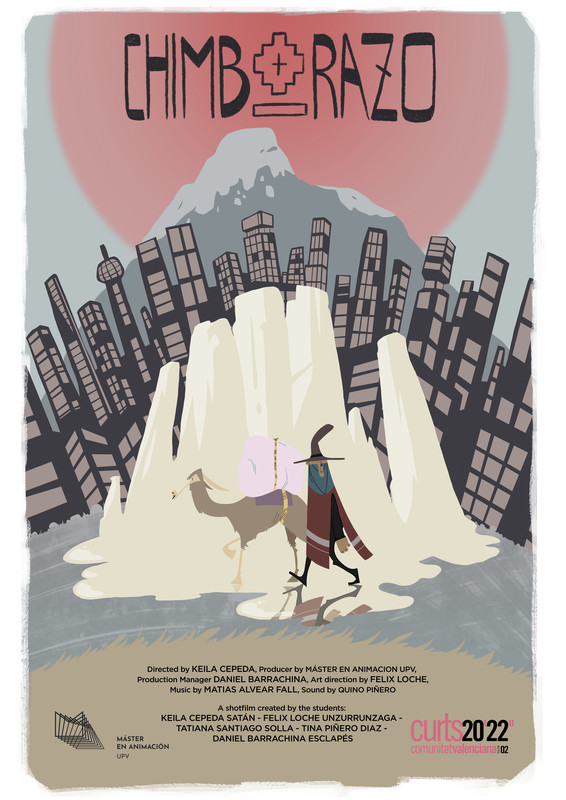
FOOTPRINTS IN THE FOREST
by Juhaidah Joemin, Sandra Khoo, Malaysia
A recently orphaned rhino tries to find a new home in the wilds of the Borneo rainforest.
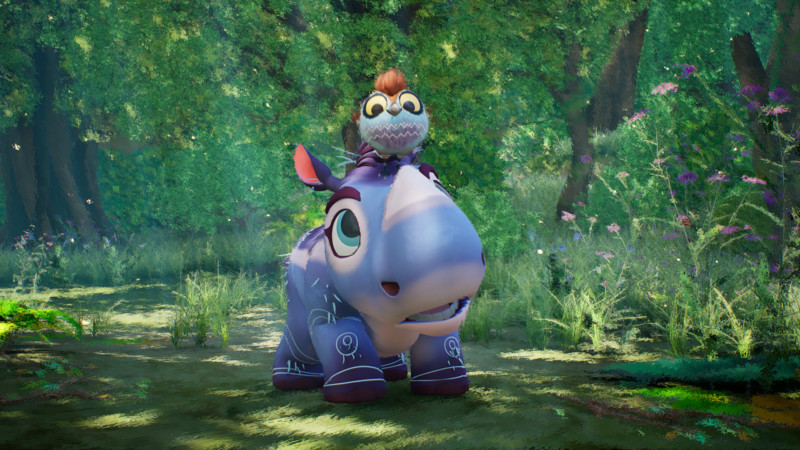
GO GO GIWAS: SOWING DREAM SEEDS
by Suet-Er Hee, Yi-Feng Kao, Taiwan
“Go Go Giwas” is an animated TV series. In the series, the main character, Giwas keeps learning new knowledge and cultural wisdom through inquiry in the context of her tribal village life to be the first female mrhu (Atayal leader) in her tribe. One day, playing with the spinning top, Giwas and her companions accidentally came to a space station through the legendary time machine. They learned how the space station space flies on the low Earth orbit from the resident chat robot. Accompanied a resident astronaut, they experienced wonderful daily life on the space station. Viewing the fantastic beauty and partial ruins of the Earth from space, she strengthened her idea to protect the Earth.
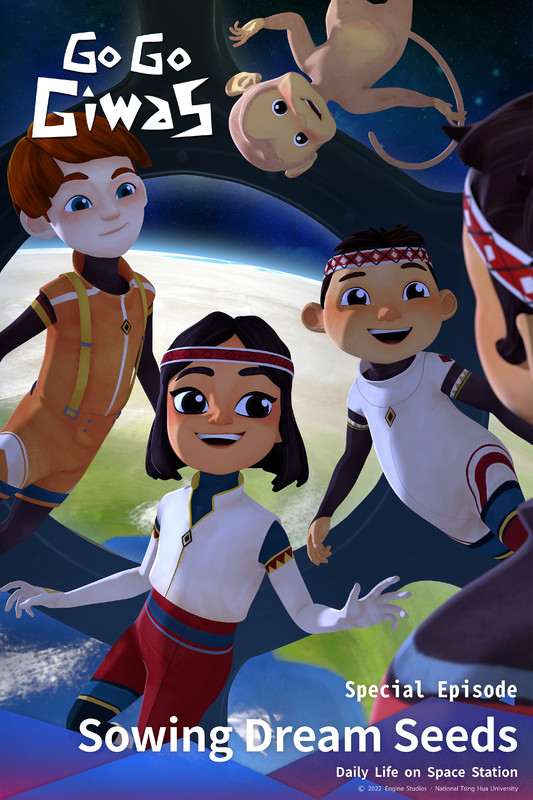
HOLLOW
by Dao Qyunh Nhu, Malaysia
There is an animation project titled Hollow produced by our animation students, which emphasized the massive drop of the American bumblebee population by 90% since the year 2000 due to the same factors that affect other key pollinators: habitat loss, climate change, and the widespread use of bee-killing pesticides.
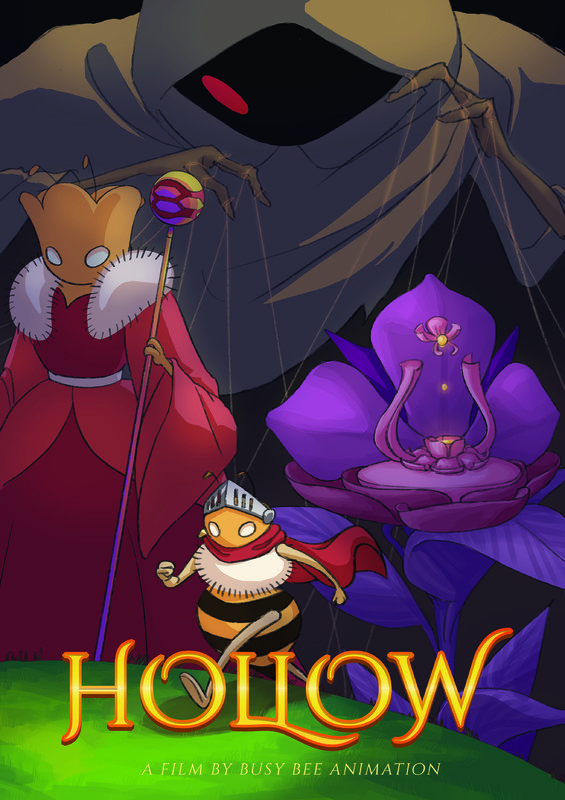
THE LIFE AND TIMES OF JENAH
by Yew Aun Quek, Malaysia
Jenah, the black-spot snapper, spends her life in all three tropical marine ecosystems – born in the mangroves, grows up in the seagrass beds and lives her adult life in the coral reefs. These ecosystems are as beautiful as they are threatened by human activity. Join her as she navigates the challenging path to adulthood; swimming amongst the feet of giants, greener on the other side and nature’s art gallery.
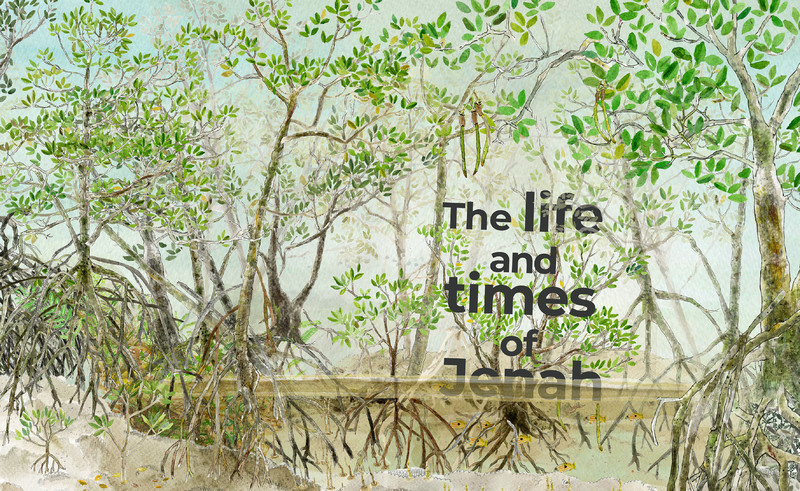
THE MENANCE FROM ABOVE
by Mariam Khayat, Saudi Arabia
In the shallow waters of the Red Sea, a happy-go-lucky fish is forced to set out on a journey to save the sea creatures from the soulless monster before it kills all life underwater.
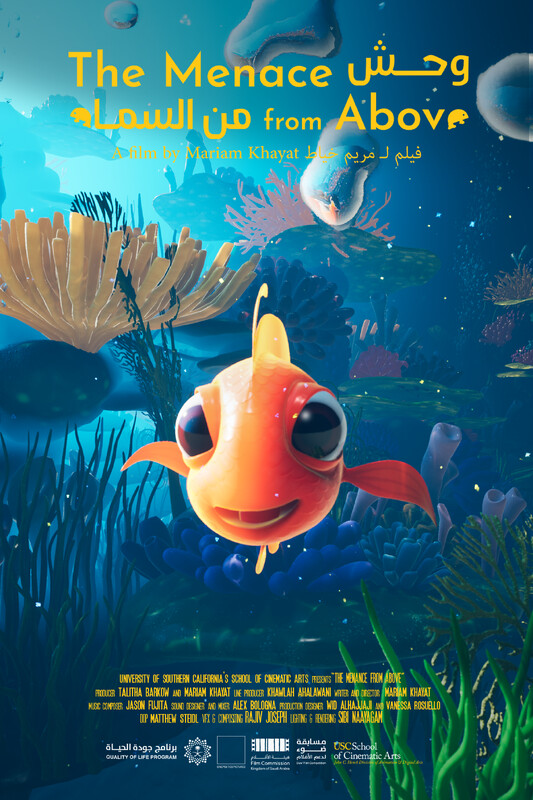
Public Service Announcement
HIJAU
by Zulzarif Irfan, Malaysia
There are lots of waste, trash and other things in our ecosystem. There are lots of way too, to reduce them. One just simply, throw it in the bin. Even better to 3R them. Reduce, Reuse, and Recycle.

THE LOST VOICES OF NATURE
by Matthew Agustin, United States
Because of human activity, the peace and harmony of nature are being threatened. Air pollution, forest clearing, loss of wetland, and other man- induced environmental changes lead up to this. exploitation of the sea creature are leading to the depletion of life in the earth’s oceans. Animals fleeing their homes due to the destruction of their habitats. Our planet faces a global extinction crisis never before met in the history of humanity. We hear less and less every day. Soon, their voices will fade away into oblivion. This issue concerns us deeply. If the world is silenced, then a very bleak future awaits us our children.
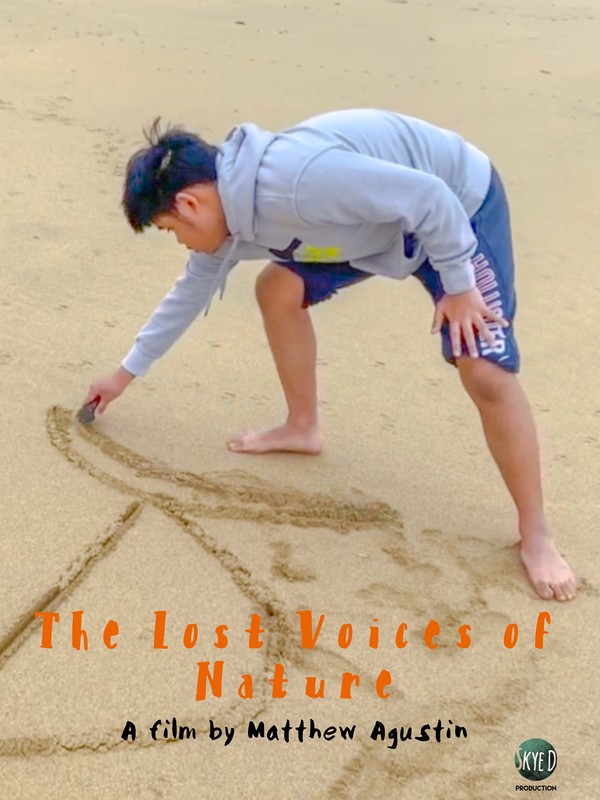
WHAT GOES UP MUST COME DOWN
by Farah Landemaine, Abyan Junus-Nishizawa, Malaysia
A group of endangered baby animals stumble upon a colourful balloon in the wild jungle, and what follows is an adventure full of fun and chaos. But their innocent playtime takes a dangerous turn when they get entangled with the balloon’s strings, and soon discover that their new toy comes with a price. Millions of balloons are released each year with damaging consequences to wildlife in our jungles and oceans. This 3-minute public service announcement animation is a must-see for children and adults alike, reminding us all of the power of our actions and the importance of protecting the world that we share with our animal friends.
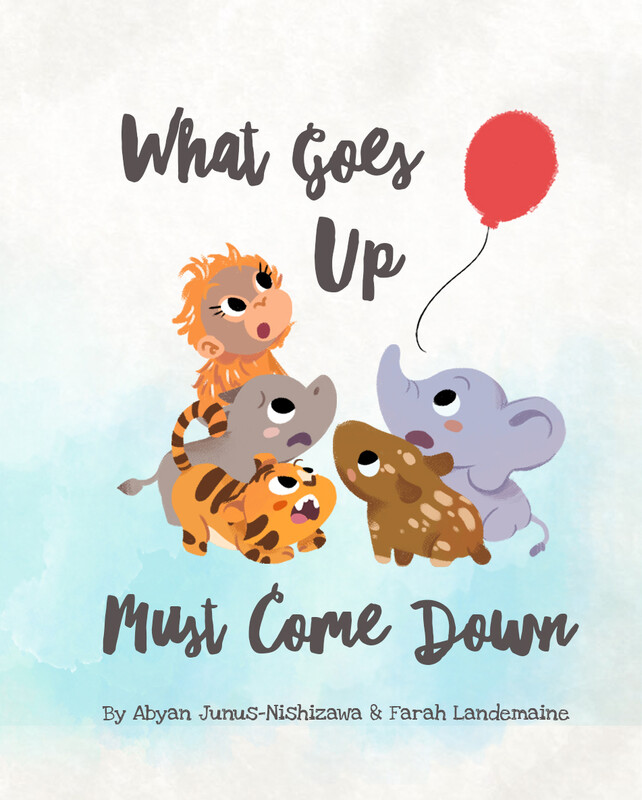
Public Service Announcement – Air Kita
JADILAH PERWIRA JIMAT AIR
by Choo Yee Chin, Malaysia
Isu berhubung penggunaan air secara berlebihan oleh rakyat Malaysia bukanlah perkara baharu malah sering dikaitkan dengan sikap masyarakat sendiri. Budaya penggunaan air secara berhemah yang kurang dipupuk oleh sebahagian besar rakyat dalam kehidupan seharian telah menyumbang kepada masalah pembaziran air. Berapa ramai dalam kalangan kita yang betul menghargai air ketika bekalan air mencukupi ? Mungkin kita masih leka dan alpa tentang kenikmatan ini. Ini menjadikan ramai bersikap tidak endah dan memandang enteng terhadap isu pembaziran air yang masih berleluasa.Usah sampai suatu hari nanti apabila berdepan dengan krisis bekalan air, masyarakat baru sedar untuk menghargai nilai sumber alam ini. Secara tuntasnya, setiap orang mempunyai tanggungjawab dan peranan demi menjayakan usaha melestarikan alam sekitar. Menggunakan air secara berhemat adalah penting demi menjamin kelestarian bekalan air bersih.
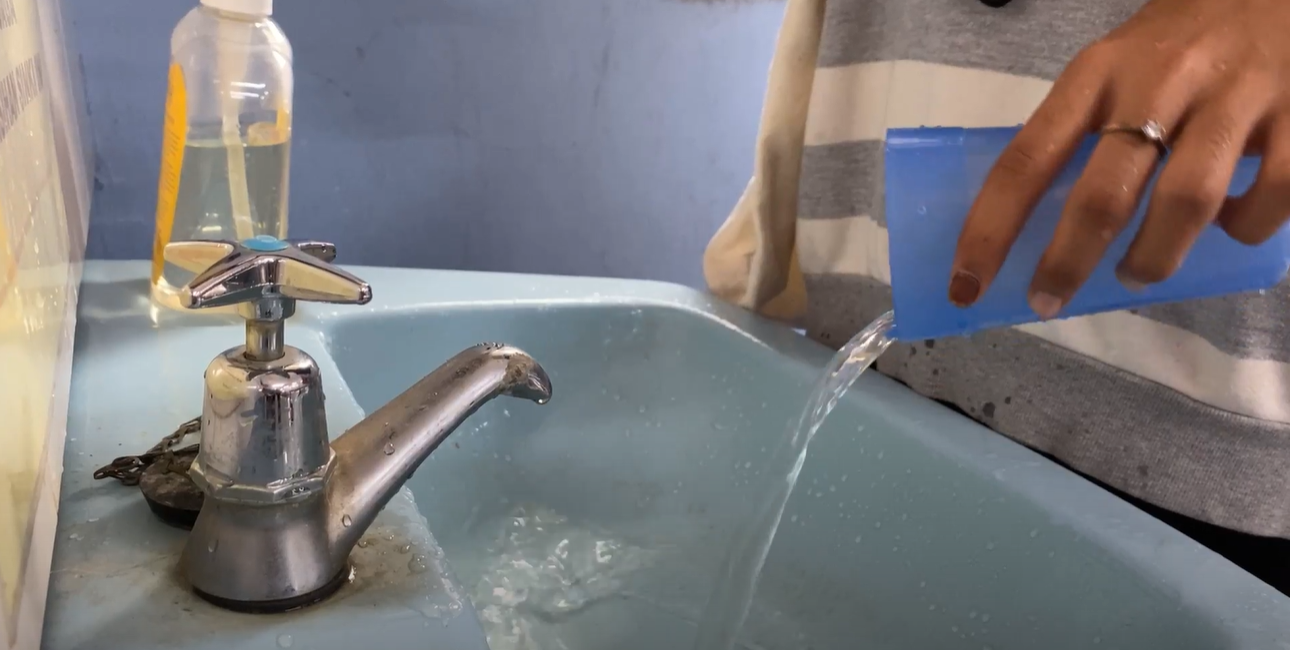
JIMAT AIR!
by Abdul Wafiy Bin Kamarudin, Malaysia
Video merupakan iklan JOM JIMATKAN AIR. Dalam video ini disenaraikan beberapa cara yang boleh dilakukan dalam usaha untuk menjimatkan air di rumah atau dimana-mana sahaja. Antara tips untuk menjimatkan air adalah tutup paip air setelah digunakan. Ini merupakan kebiasaan apabila seseorang itu menggunakan tandas dan lupa untuk menutup paip dengan sepenuhnya. Selain itu, Menggunakan mesin basuh dengan muatan penuh, kurangkan masa mandi, kumpulkan air hujan dalam baldi, tanam pokok di kawasan tadahan hujan, laporkan kebocoran kepada pihak berkuasa dan basuh pinggan dalam baldi berisi air. Dalam video ini juga menerangkan tentang penggunaan air di Malaysia dan piawaian antarabangsa.
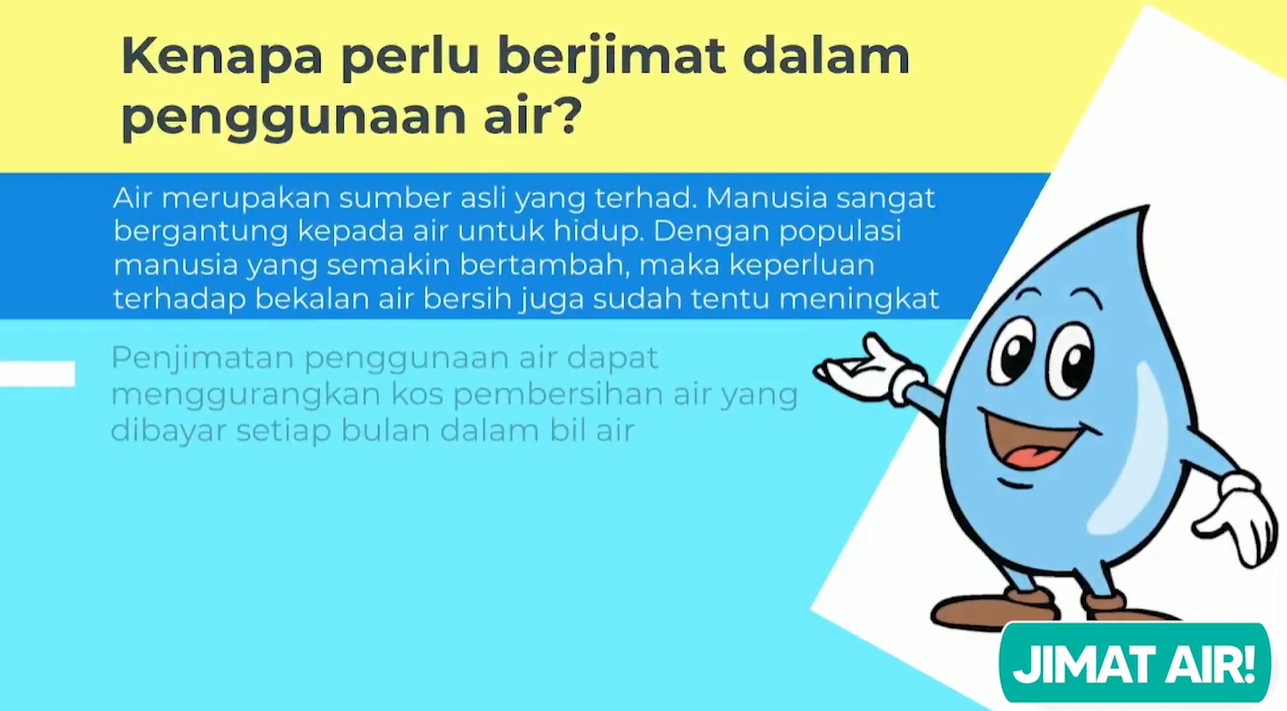
MANA AKU TAU
by Mohsen bin Miskam, Malaysia
Min nak basuh pinggan. Dibukanya air tapi tiada. Tanya pada Man dah bayar belum bil air. Man kata dah bayar. Dah tu kenapa air takde?
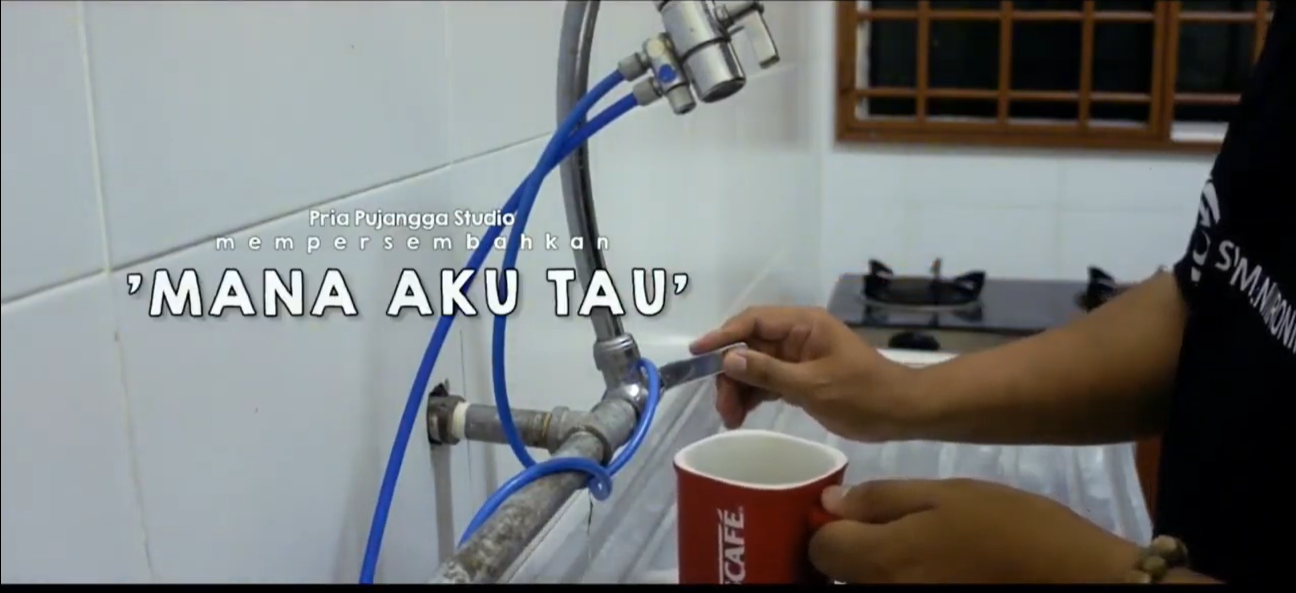
PELAMPUNG
by Mohsen bin Miskam, Malaysia
Man pening dengan bil air yang semakin meningkat saban bulan. Min pula membazir air. Tanpa disedari, punca bil air melabung adalah disebabkan oleh pelampung. Alamak!
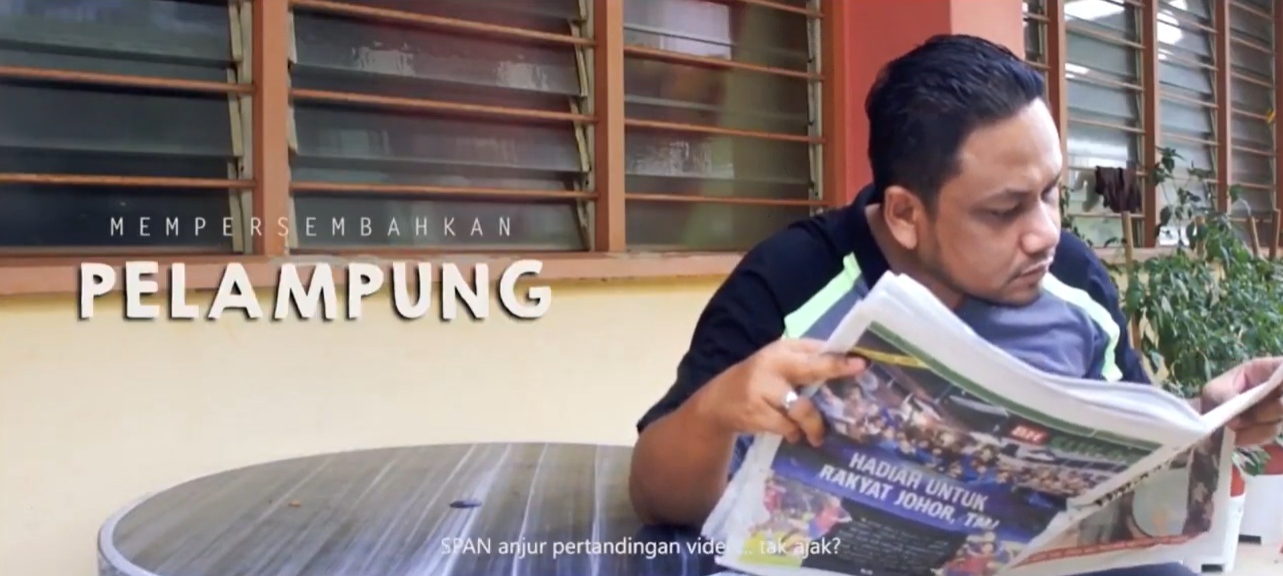
TIGA TIPS JIMAT AIR
by Hafiz bin Abdullah Sima, Malaysia
Tiga tips untuk jimat air ialah guna air secara berhemat. Contohnya, sediakan cawan untuk berkumur bagi mengelakkan pembaziran air waktu menggosok gigi. Kedua, tadahkan air waktu hujan. Tadahan air hujan boleh digunakan semula untuk siram pokok dan bunga. Ketiga, pastikan pili ditutup secara ketat. Masyarakat perlu mempunyai kesedaran diri kerana setiap titisan air yang dibiarkan adalah pembaziran. Sentiasa ingat Air Kita, Tanggungjawab Bersama!
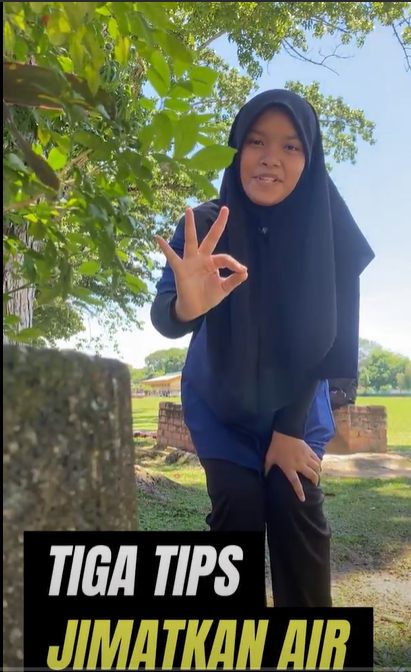
WATER SCARCITY AND CLIMATE CHANGE – A WAKE-UP CALL
by Azilah Abd Aziz, Malaysia
“Water Scarcity & Climate Change: A Wake-Up Call” is a video that underscores the urgent link between water scarcity and climate change. Through compelling visuals and concise narration, it highlights how rising global temperatures exacerbate water shortages, threaten ecosystems, and impact communities worldwide. Viewers will witness drought-stricken landscapes, melting glaciers, and parched farmlands, driving home the message that we’re facing a water crisis like never before. The video also emphasizes the interconnectedness of these issues, urging viewers to take action in conserving water and supporting sustainable practices to combat climate change. With a call to action, it leaves a lasting impression, motivating individuals to be part of the solution in safeguarding our planet’s most precious resource. “Water Scarcity & Climate Change: A Wake-Up Call” is a poignant reminder that the time to act is now. The sources of the videos are from Pexels and YouTube.
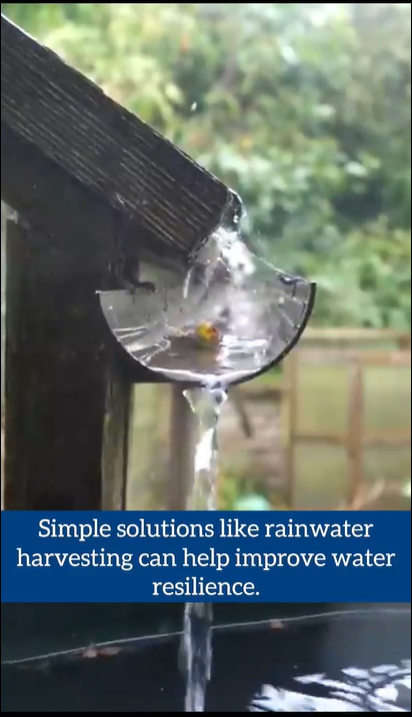
ABOUT KLEFF
The Kuala Lumpur Eco Film Festival (KLEFF) is Malaysia’s first and longest-serving platform promoting sustainable living through showcases of environmentally-themed films and programs. Since 2008, KLEFF’s mission is to accelerate mainstreaming of sustainable living and stewardship of the environment through the power of audio visual materials and activities.
During the festival, KLEFF hosts the screening of more than 50 films reaching to an audience of more than 5,000. With the collaboration of partners and sponsors, KLEFF is gradually becoming the nation’s celebrated grassroots cultural and environmental event.
The Kuala Lumpur Eco Film Festival is a not-for-profit program organized by local environmental NGO, EcoKnights.
SAY HELLO TO US
Feel free to get in touch with us, we are always open to discussing new projects, creative ideas or opportunities for the greater good.
Contact us using our email :
info@kleff.my
or call us at: